Magnepan LRS+ Loudspeaker
2022 Golden Ear: Magnepan LRS+ Quasi-Ribbon Loudspeaker
REVIEW by Jonathan Valin Oct 07, 2022
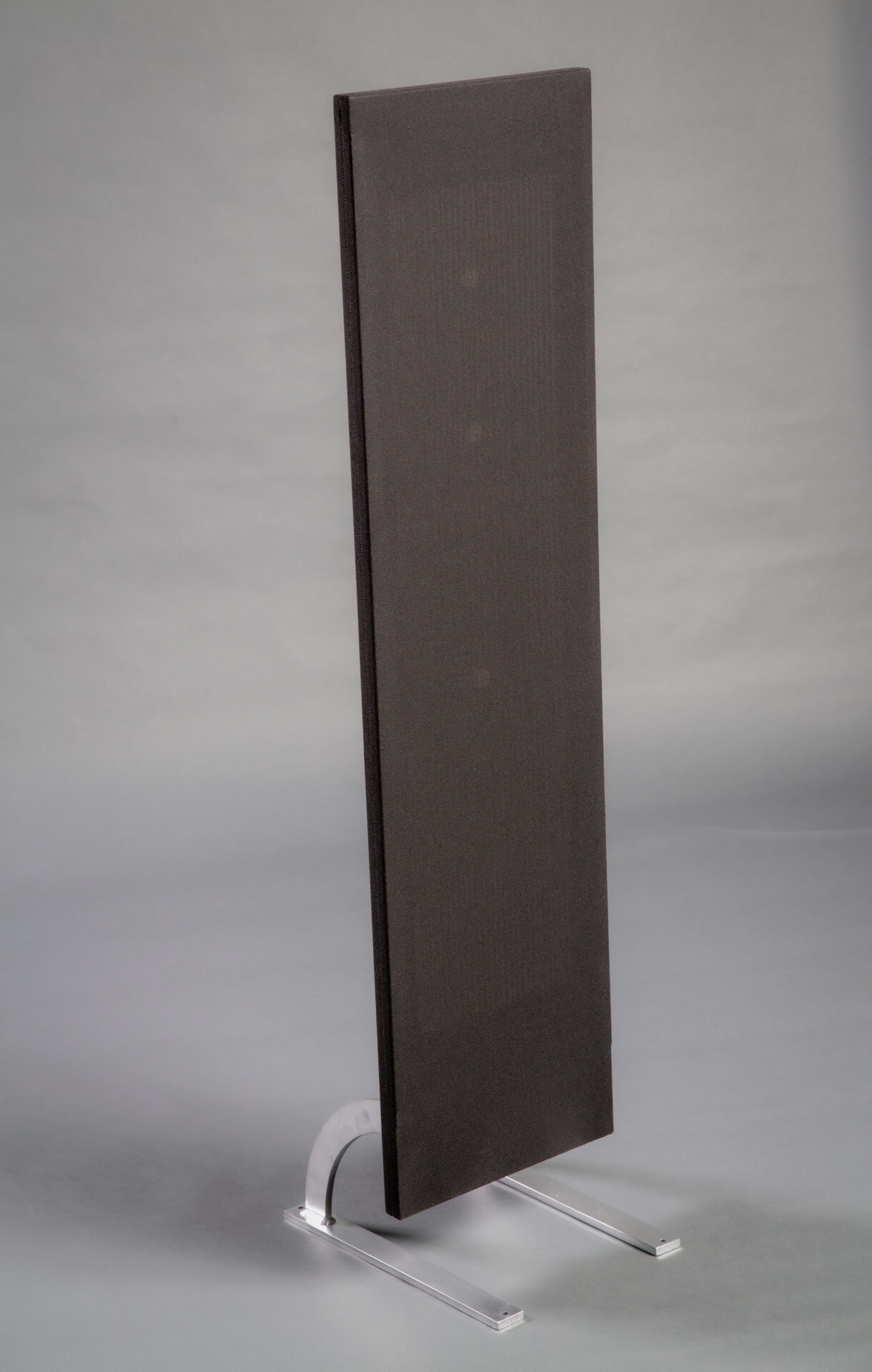
Magnepan LRS+ Quasi-Ribbon Loudspeaker
Those of you who have been reading me for the past 30 years already know that I am a huge fan of Magnepan loudspeakers. Indeed, as I’ve noted in these pages many times before, it was the Maggie 1U/D that set me on the road to the absolute sound. Before I heard that first Magneplanar, I relied on published specs and magazine test results to narrow down the speakers and electronics I was interested in. After listening to it (in 1973) and being momentarily fooled into thinking I was hearing someone playing a real concert grand (there happened to be a piano in the room, hidden behind what I thought were decorative screens, which turned out to be Magnepan 1Us), I realized there was a better way to judge high-fidelity components—the HP way, the TAS way, the way that puts the closest approximation of the sound of the real thing first and specs last.
Not only did Maggie’s founder, Jim Winey, invent an entirely new transducer that came closer to making acoustic instruments sound “there” than anything that preceded it; he also priced his flagship quite reasonably at $995 ($6550 in today’s dollars). To this day, Magnepan’s offerings are eminently affordable. Even its current highest-ticket item—the eight-foot wide, six-foot tall, four-panel MG30.7—comes in at $45,000, which isn’t chicken feed, of course, but is still a far cry from a three-quarter-of-a-million-dollar Magico M9 or a half-a-million-dollar Wilson XVX or a $320k MBL 101 X-treme MKII (which are the company it keeps).
When I reviewed the MG30.7, I explained in detail what I liked and didn’t like about Maggies. Rather than recasting what I wrote, allow me to quote from that review, starting with the plus side of the Maggie ledger.
พวกคุณที่อ่านบทความของฉันมา 30 ปี แล้วคงรู้ดีว่าฉันเป็นแฟนตัวยงของลำโพง Magnepan จริงๆ แล้ว อย่างที่ฉันได้กล่าวไว้ในหน้านี้หลายครั้งแล้วว่า Maggie 1U/D เป็นตัวจุดประกายให้ฉันได้สัมผัสกับเสียงที่สมบูรณ์แบบ ก่อนที่ฉันจะได้ยิน Magneplanar เครื่องแรก ฉันได้อาศัยข้อมูลจำเพาะที่เผยแพร่และผลการทดสอบในนิตยสารเพื่อจำกัดลำโพงและอุปกรณ์อิเล็กทรอนิกส์ที่ฉันสนใจ หลังจากได้ฟังมัน (ในปี 1973) และถูกหลอกไปชั่วขณะว่าฉันกำลังได้ยินใครบางคนเล่นเปียโนแกรนด์สำหรับคอนเสิร์ตจริงๆ (บังเอิญมีเปียโนอยู่ในห้องซึ่งซ่อนอยู่หลังสิ่งที่ฉันคิดว่าเป็นหน้าจอตกแต่ง ซึ่งกลายเป็น Magnepan 1U) ฉันจึงรู้ว่ามีวิธีที่ดีกว่าในการตัดสินส่วนประกอบที่มีความเที่ยงตรงสูง นั่นคือวิธี HP วิธี TAS วิธีที่ให้ความสำคัญกับเสียงที่ใกล้เคียงที่สุดของสิ่งจริงก่อนแล้วจึงพิจารณาข้อมูลจำเพาะทีหลัง
ไม่เพียงแต่จิม ไวนีย์ ผู้ก่อตั้งแม็กกี้เท่านั้นที่ประดิษฐ์ตัวแปลงสัญญาณแบบใหม่หมดที่ใกล้เคียงกับการสร้างเสียงเครื่องดนตรีอะคูสติกมากกว่าเครื่องดนตรีรุ่นอื่นๆ ก่อนหน้านี้ เขายังตั้งราคาเรือธงของเขาไว้อย่างสมเหตุสมผลที่ 995 ดอลลาร์ (6,550 ดอลลาร์ในปัจจุบัน) จนถึงทุกวันนี้ ผลิตภัณฑ์ของ Magnepan ยังคงเป็นสินค้าที่ราคาเอื้อมถึงได้ แม้แต่สินค้าที่ขายดีที่สุดในปัจจุบันอย่างMG30.7 สี่แผงกว้าง 8 ฟุต สูง 6 ฟุต ก็มีราคาอยู่ที่ 45,000 ดอลลาร์ ซึ่งแน่นอนว่าไม่ใช่ราคาที่แพงเกินไป แต่ก็ยังห่างไกลจาก Magico M9ที่ราคา 3 ใน 4 ล้านดอลลาร์ หรือ Wilson XVX ที่ ราคา 5 ล้านดอลลาร์หรือMBL 101 X-treme MKII ที่ราคา 320,000 ดอลลาร์อย่างมาก (ซึ่งเป็นบริษัทที่ Magnepan ดำเนินงานอยู่)
เมื่อผมรีวิว MG30.7 ผมได้อธิบายอย่างละเอียดว่าผมชอบและไม่ชอบอะไรเกี่ยวกับ Maggies แทนที่จะมาเขียนซ้ำสิ่งที่ผมเขียน ผมขออนุญาตยกมาจากรีวิวนั้น โดยเริ่มจากข้อดีของ Maggie
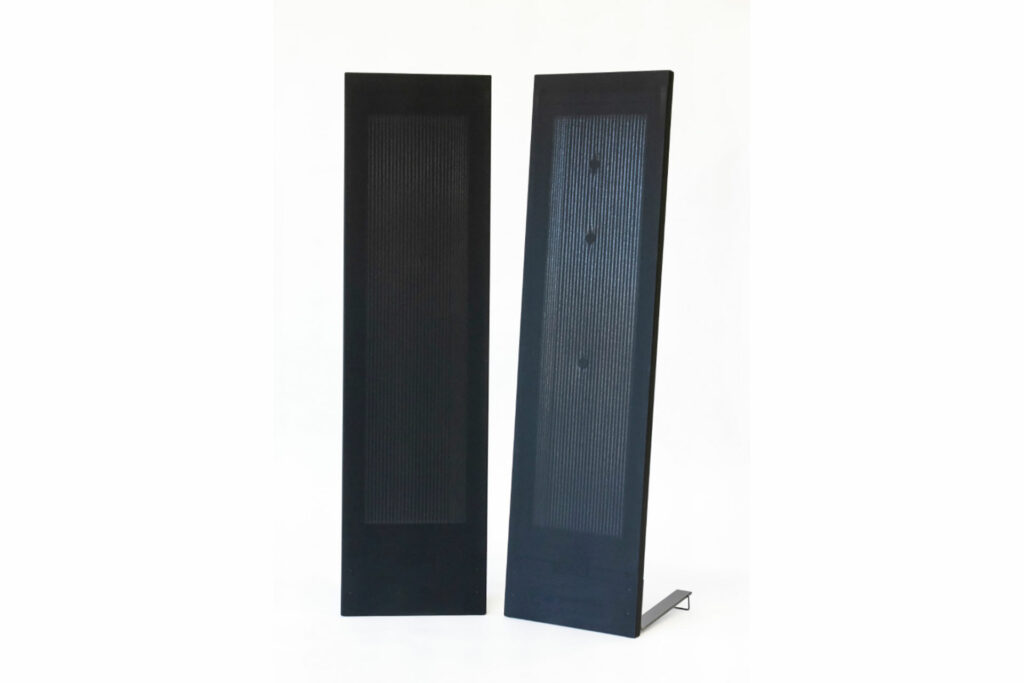
“To begin with, Maggies have no box and, hence, no box coloration. Given the strides that have been made in dynamic drivers and their enclosures, you might think this wouldn’t make as dramatic a difference as it did years ago. But that really isn’t the case. Boxes, no matter how skillfully made, are still boxes, and to varying degrees they still add their own resonant colorations to the sound. (They also often add confusion to the sound, due in part to the turbulence of the backwaves that are rattling around inside them.) Typically, this results in a dark woody or bright metallic hue overlying the natural tonality of instruments, some elongation or truncation of the duration of the dynamic/harmonic envelope, a masking of fine detail, and an intermittent sense that the music can be traced back to the drivers—faults the Maggies simply don’t suffer from.
“Now I’ll grant that the sound of box speakers can often be very attractive—that the spring-like action of air trapped inside (or vented partly from within) their enclosures adds ‘zip’ to attacks, tonal density and dynamic weight to the upper bass and lower midrange, and slam to the midbass. Indeed, for those listeners who put beauty and excitement first, the added color and power of box speakers are indispensable. For listeners looking for an approximation of the sound of the real thing, however, these are colorations that one almost never hears in life, unless the orchestra itself is enclosed in a box (as a pit orchestra is) or its sound is being amplified by loudspeakers in a hall or an auditorium.
“Second, Maggies are dipole line-source rather than dynamic quasi-point-source loudspeakers. This means they generate their sound in free space forward and backward, rather than sending half toward you and half into a sealed enclosure or an enclosure with a hole in it. Because of their highly coherent, figure-eight wavelaunch, line sources like the Maggies tend to interact less destructively with listening rooms than quasi-point-source cone speakers do. They have little-to-no floor or ceiling bounce, zero output immediately to their sides, an out-of-phase backwave that is mostly dissipated by the room itself, close to uniform power response on- and off-axis, and zero cabinet diffraction. This doesn’t mean that they are a snap to set up; they are anything but. It just means that once properly positioned, they don’t add as much room sound to the presentation as typical dynamic speakers do. Combine this with their boxless openness, free-standing imaging, vast soundstage, phenomenal resolution of inner detail, lightning transient response, and neutral timbre, and Maggies seem markedly less ‘there’ as sources than almost any dynamic-speakers-in-a-box I’ve heard.
“Third, like electrostats Maggies use extremely lightweight membrane drivers that have a much larger radiating area than cone drivers do and that, unlike cone drivers, are uniformly driven over their entire surface, making for lower distortion and higher linearity in their passbands. Unlike cones, Maggies do not need extremely steep crossovers to keep breakup modes at bay (although, to be fair, Magnepan has in the past played various tricks to mask the differences in speed, distortion, and resolution among its planar-magnetic, quasi-ribbon, and true-ribbon drivers). Even though I have some quibbles about earlier iterations of large single-panel Maggies (for which see the next paragraph), at their best Magnepans are very nearly as fast on transients, as high in resolution, as low in coloration and distortion, and as truthful in timbre as the most discerning electrostats (and considerably deeper-reaching and more powerful and linear in the bottom and top octaves than many ’stats).
“Having said all this, let me admit that in my experience Maggies have also been among the most consistently frustrating loudspeakers I’ve heard and owned. When a component is nearly incomparable in certain respects, over time the areas in which it falls short (and all speakers fall short) start to weigh on you like Marley’s chains. And until recently, the Maggies, particularly the large single-panel Maggies (the 3.7s and the 20.7s), brought burdens as well as blessings.
“ก่อนอื่นเลย Maggies ไม่มีกล่องและด้วยเหตุนี้จึงไม่มีสีสันของกล่อง เมื่อพิจารณาจากความก้าวหน้าที่เกิดขึ้นในไดรเวอร์ไดนามิกและกล่องหุ้มของไดรเวอร์เหล่านี้ คุณอาจคิดว่าสิ่งนี้จะไม่สร้างความแตกต่างอย่างมากเท่ากับเมื่อหลายปีก่อน แต่ในความเป็นจริงแล้วไม่ใช่เช่นนั้น กล่องไม่ว่าจะทำขึ้นอย่างชำนาญเพียงใดก็ยังคงเป็นกล่อง และในระดับที่แตกต่างกัน กล่องเหล่านี้ยังคงเพิ่มสีสันที่ก้องกังวานให้กับเสียง (กล่องเหล่านี้ยังมักทำให้เสียงสับสน ซึ่งส่วนหนึ่งเกิดจากความปั่นป่วนของคลื่นแบ็คเวฟที่สั่นสะเทือนอยู่ภายใน) โดยทั่วไปแล้ว สิ่งนี้จะส่งผลให้เกิดโทนสีไม้เข้มหรือสีเมทัลลิกสดใสทับซ้อนกับโทนเสียงตามธรรมชาติของเครื่องดนตรี มีการยืดหรือตัดทอนระยะเวลาของซองไดนามิก/ฮาร์โมนิก การปกปิดรายละเอียดเล็กๆ น้อยๆ และความรู้สึกเป็นระยะๆ ว่าดนตรีสามารถสืบย้อนไปยังไดรเวอร์ได้ ซึ่งเป็นข้อบกพร่องที่ Maggies ไม่พบ
“ตอนนี้ฉันจะยอมรับว่าเสียงของลำโพงกล่องนั้นมักจะน่าดึงดูดใจมาก—การกระทำที่เหมือนสปริงของอากาศที่ติดอยู่ภายใน (หรือระบายบางส่วนจากภายใน) ทำให้เสียงมีพลัง ความหนาแน่นของโทนเสียงและน้ำหนักไดนามิกให้กับเสียงเบสสูงและเสียงกลางต่ำ และความหนักหน่วงให้กับเสียงเบสกลาง สำหรับผู้ฟังที่ให้ความสำคัญกับความสวยงามและความตื่นเต้นเป็นอันดับแรก สีสันและพลังที่เพิ่มขึ้นของลำโพงกล่องนั้นเป็นสิ่งที่ขาดไม่ได้ อย่างไรก็ตาม สำหรับผู้ฟังที่กำลังมองหาเสียงที่ใกล้เคียงกับของจริงแล้ว สีสันเหล่านี้แทบจะ ไม่เคย ได้ยินในชีวิตเลย เว้นแต่ว่าวงออร์เคสตรานั้นจะอยู่ในกล่อง (เช่นวงออร์เคสตราในหลุม) หรือเสียงของวงจะถูกขยายโดยลำโพงในห้องโถงหรือหอประชุม
ประการที่สอง Maggies เป็นลำโพงแบบไดโพลไลน์ซอร์สแทนที่จะเป็นลำโพงแบบควาซิพอยต์ซอร์สแบบไดนามิก ซึ่งหมายความว่าลำโพงเหล่านี้จะสร้างเสียงในพื้นที่ว่างไปข้างหน้าและข้างหลัง แทนที่จะส่งครึ่งหนึ่งเข้าหาคุณและอีกครึ่งหนึ่งเข้าไปในตู้ที่ปิดสนิทหรือตู้ที่มีรูอยู่ เนื่องจากมีการส่งคลื่นรูปเลขแปดที่มีความสอดคล้องกันสูง แหล่งกำเนิดเสียงแบบไลน์ซอร์สเช่น Maggies จึงมีแนวโน้มที่จะโต้ตอบกับห้องฟังน้อยกว่าลำโพงแบบโคนแบบควาซิพอยต์ซอร์ส ลำโพงเหล่านี้มีการสะท้อนจากพื้นหรือเพดานน้อยมาก ไม่มีเอาต์พุตทันทีที่ด้านข้างของลำโพง มีคลื่นย้อนกลับนอกเฟสซึ่งส่วนใหญ่กระจายโดยห้องเอง มีการตอบสนองกำลังที่ใกล้เคียงกันทั้งบนและนอกแกน และไม่มีการกระจายของตู้ลำโพง สิ่งนี้ไม่ได้หมายความว่าจะตั้งค่าได้ง่าย แต่กลับไม่เป็นเช่นนั้นเลย เพียงแค่หมายความว่าเมื่อวางตำแหน่งอย่างเหมาะสมแล้ว ลำโพงเหล่านี้จะไม่เพิ่มเสียงในห้องให้กับงานนำเสนอมากเท่ากับลำโพงไดนามิกทั่วไป เมื่อรวมเข้ากับความเปิดกว้างแบบไม่มีกล่อง การสร้างภาพแบบตั้งพื้น เวทีเสียงที่กว้าง ความละเอียดของรายละเอียดภายในที่น่าทึ่ง การตอบสนองชั่วขณะที่รวดเร็ว และเสียงที่เป็นกลาง และ Maggies ดูเหมือน ว่า จะ “ไม่” อยู่ที่นั่นอีกต่อไปเมื่อเทียบกับลำโพงแบบไดนามิกในกล่องแทบทุกตัวที่ฉันเคยได้ยิน
“ประการที่สาม เช่นเดียวกับอิเล็กโตรสแตต Maggies ใช้ไดรเวอร์เมมเบรนที่เบามากซึ่งมีพื้นที่แผ่รังสีที่ใหญ่กว่าไดรเวอร์แบบกรวยมาก และแตกต่างจากไดรเวอร์แบบกรวย ซึ่งถูกขับเคลื่อนอย่างสม่ำเสมอบนพื้นผิวทั้งหมด ทำให้มีการบิดเบือนที่ต่ำกว่าและความเป็นเส้นตรงที่สูงกว่าในแบนด์ผ่านของไดรเวอร์ ซึ่งแตกต่างจากกรวย Maggies ไม่จำเป็นต้องใช้ครอสโอเวอร์ที่ชันมากเพื่อป้องกันโหมดการแตก (แม้ว่าเพื่อให้ยุติธรรม Magnepan เคยเล่นกลต่างๆ เพื่อปกปิดความแตกต่างในด้านความเร็ว การบิดเบือน และความละเอียดระหว่างไดรเวอร์แม่เหล็กแบบระนาบ ควาซิริบบอน และริบบอนจริงในอดีต) แม้ว่าฉันจะมีข้อติงเล็กน้อยเกี่ยวกับ Maggies แผงเดียวขนาดใหญ่ในรุ่นก่อนๆ (ซึ่งดูย่อหน้าถัดไป) ในกรณีที่ดีที่สุด Magnepan เกือบจะเร็วพอๆ กันในการเปลี่ยนแปลงชั่วขณะ ความละเอียดสูงพอๆ กัน สีและการบิดเบือนต่ำพอๆ กัน และมีความถูกต้องในโทนสีเท่ากับอิเล็กโตรสแตตที่แยกแยะเสียงได้ดีที่สุด (และมีระยะการเข้าถึงที่ลึกกว่า มีพลังและเป็นเส้นตรงมากกว่าในอ็อกเทฟล่างและบนมากกว่าไดรเวอร์แบบกรวยหลายตัว ‘สถิติ)
“เมื่อได้กล่าวมาทั้งหมดนี้แล้ว ขอให้ข้าพเจ้ายอมรับว่าจากประสบการณ์ของข้าพเจ้า ลำโพง Maggies ถือเป็นลำโพงที่สร้างความหงุดหงิดใจให้กับข้าพเจ้ามากที่สุดในบรรดาลำโพงที่ข้าพเจ้าเคยได้ยินและเคยเป็นเจ้าของมา เมื่อลำโพงบางชิ้นแทบจะเทียบกันไม่ได้เลยในบางประเด็น เมื่อเวลาผ่านไป พื้นที่ที่ลำโพงชิ้นนั้นไม่มีคุณภาพ (และลำโพงทุกตัวไม่มีคุณภาพ) จะเริ่มกดทับคุณเหมือนกับโซ่ของ Marley และจนกระทั่งเมื่อไม่นานนี้ ลำโพง Maggies โดยเฉพาะลำโพง Maggies แผงเดียวขนาดใหญ่ (3.7 และ 20.7) มีทั้งข้อดีและข้อเสีย
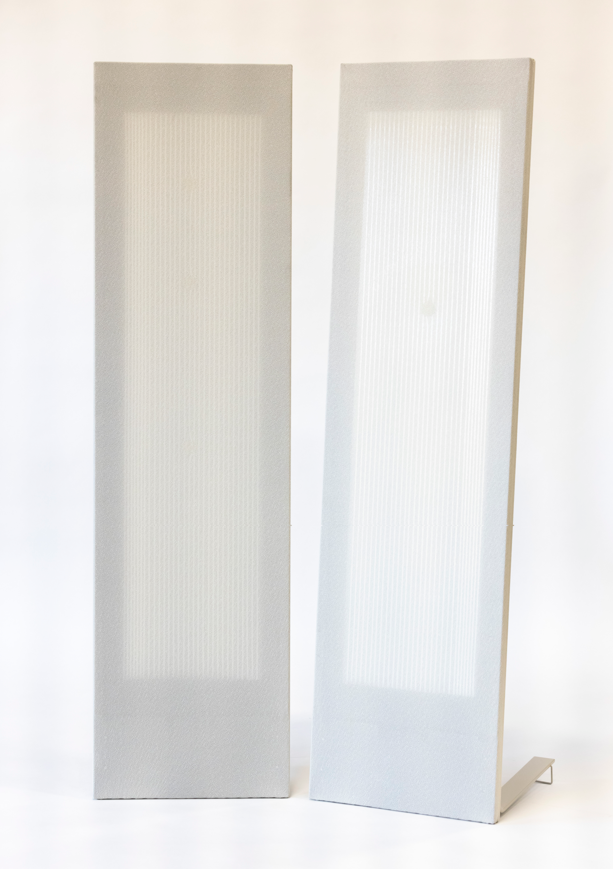
“First, there was the matter of driver-to-driver coherence. While Magnepan’s true ribbon tweeter is a technological and sonic marvel, to my ear it never blended smoothly with Maggie’s quasi-ribbon drivers. (This is precisely why I’ve always preferred Maggie’s all-quasi-ribbon 1.7 series to the larger single-panel speakers in its line. Yes, you lost some of the extension, resolution, and sheer glamour of Maggie’s true ribbon on the top end—and you lost some of the amazing soundstage size and low-end reach of the bigger ’Pans—but what you gained back in octave-to-octave smoothness was well worth the sacrifice.)
“Second, line-source Maggies do not have the laser-cut image focus of quasi-point-source cones; their images are quite a bit larger than those of box speakers, which is something that takes getting used to (or not). With big ensembles or big instruments like pianos or drumkits, this isn’t a problem; in fact, it is quite realistic. But vocalists can sometimes seem slightly outsized—and flat in aspect.
“Which brings me to three: Maggies (or at least latter-day ones) don’t have quite the same three-dimensional body as cone speakers. And that is because they don’t have the power-range warmth and fullness (or box coloration, depending on your point of view) of cone speakers. To be fair, large single-panel Maggies have sometimes seemed a bit sucked-out in the power range (a byproduct, perhaps, of their dipole radiation pattern—and the bass-range phase-cancellation that can engender), and though quite extended and well defined in the bottom octaves they don’t do slam the way big dynamic speakers do. On acoustic instruments that play down into the low bass, such as doublebasses, timps, piano, organ, contrabassoon, they are nigh incomparably realistic. On Fender bass, synth, rock drumkit, or any instrument that is as much about power and impact as it is about pitch, timbre, and duration, the thrill, though not gone, is not there the way it is with, oh, top-line Wilsons.
“Fourth, big Maggies are, well, big and not particularly attractive loudspeakers that do anything but disappear in a listening room. Though I’ve heard them perform quite well in smaller spaces, they tend to like larger ones and, regardless of the size of the listening space, they thrive on power. Though not difficult to drive, they are low in sensitivity and need lots of amplifier, though they don’t necessarily need crème de la crème amplification.”
“ประการแรก มีเรื่องของความสอดคล้องระหว่างไดรเวอร์กับไดรเวอร์ แม้ว่าทวีตเตอร์ริบบอนแท้ของ Magnepan จะเป็นสิ่งมหัศจรรย์ทางเทคโนโลยีและเสียง แต่ในความเห็นของฉัน มันไม่เคยผสมผสานกับไดรเวอร์กึ่งริบบอนของ Maggie ได้อย่างราบรื่น (นี่เป็นเหตุผลว่าทำไมฉันจึงชอบซีรีส์ 1.7 กึ่งริบบอนทั้งหมดของ Maggie มากกว่าลำโพงแผงเดียวขนาดใหญ่ในไลน์เดียวกันเสมอ ใช่ คุณสูญเสียการขยาย ความละเอียด และความมีเสน่ห์ของริบบอนแท้ของ Maggie ในส่วนปลายเสียงไปบ้าง และคุณสูญเสียขนาดเวทีเสียงที่น่าทึ่งและระยะเสียงต่ำของ ‘Pans ขนาดใหญ่ไปบ้าง แต่สิ่งที่คุณได้รับกลับมาจากความราบรื่นในแต่ละอ็อกเทฟนั้นคุ้มค่ากับการเสียสละอย่างแน่นอน)
ประการที่สอง Maggies แบบเส้นตรงไม่มีโฟกัสภาพที่ตัดด้วยเลเซอร์ของกรวยแบบจุดกึ่งกลาง ภาพของ Maggies มีขนาดใหญ่กว่าภาพจากลำโพงกล่องมากพอสมควร ซึ่งต้องใช้เวลาในการทำความคุ้นเคย (หรือไม่ก็ไม่ต้อง) สำหรับวงดนตรีขนาดใหญ่หรือเครื่องดนตรีขนาดใหญ่ เช่น เปียโนหรือชุดกลอง นี่ไม่ใช่ปัญหาเลย จริงๆ แล้ว มันค่อนข้างสมจริง แต่บางครั้งนักร้องอาจดูตัวใหญ่เกินไปเล็กน้อย—และมีลักษณะแบนราบ
“ซึ่งทำให้ผมนึกถึงสามอย่าง: Maggies (หรืออย่างน้อยก็รุ่นหลังๆ) ไม่มีโครงสร้างสามมิติเหมือนกับลำโพงแบบกรวย และนั่นเป็นเพราะว่าลำโพงเหล่านี้ไม่มีความอบอุ่นและความสมบูรณ์ของช่วงกำลังขับ (หรือสีสันของกล่อง ขึ้นอยู่กับมุมมองของคุณ) เหมือนกับลำโพงแบบกรวย พูดอย่างยุติธรรมแล้ว Maggies แผงเดียวขนาดใหญ่บางครั้งดูเหมือนจะดูดพลังงานออกไปบ้าง (อาจเป็นผลพลอยได้จากรูปแบบการแผ่รังสีไดโพลและการยกเลิกเฟสช่วงเสียงเบสที่สามารถสร้างขึ้นได้) และแม้ว่าจะขยายออกไปค่อนข้างมากและกำหนดไว้อย่างชัดเจนในช่วงอ็อกเทฟล่าง แต่ก็ไม่สามารถกระแทกได้เหมือนลำโพงไดนามิกขนาดใหญ่ สำหรับเครื่องดนตรีอะคูสติกที่เล่นเสียงเบสต่ำ เช่น ดับเบิลเบส ทิมส์ เปียโน ออร์แกน คอนทราบาสซูน ลำโพงเหล่านี้มีความสมจริงอย่างหาที่เปรียบไม่ได้ สำหรับเบส Fender ซินธิไซเซอร์ ชุดกลองร็อค หรือเครื่องดนตรีใดๆ ก็ตามที่เน้นพลังและแรงกระแทกมากพอๆ กับระดับเสียง โทนเสียง และระยะเวลา ความตื่นเต้นแม้จะไม่หายไป แต่ก็ไม่หายไป มันอยู่กับวิลสันระดับท็อปเลย
“ประการที่สี่ Maggies ขนาดใหญ่เป็นลำโพงขนาดใหญ่และไม่น่าดึงดูดเป็นพิเศษ ทำอะไรได้นอกจากซ่อนตัวในห้องฟัง แม้ว่าฉันจะเคยได้ยินว่าลำโพงเหล่านี้ทำงานได้ดีในพื้นที่เล็ก ๆ แต่ลำโพงเหล่านี้มักจะชอบลำโพงขนาดใหญ่ และไม่ว่าพื้นที่ฟังจะมีขนาดใหญ่แค่ไหน ลำโพงเหล่านี้ก็ต้องการพลังงานมาก แม้ว่าจะขับไม่ยาก แต่ลำโพงเหล่านี้มีความไวต่ำและต้องใช้เครื่องขยายเสียงจำนวนมาก แม้ว่าจะไม่จำเป็นต้องใช้ เครื่องขยายเสียงแบบ ครีมเดอลาครีม ก็ตาม”
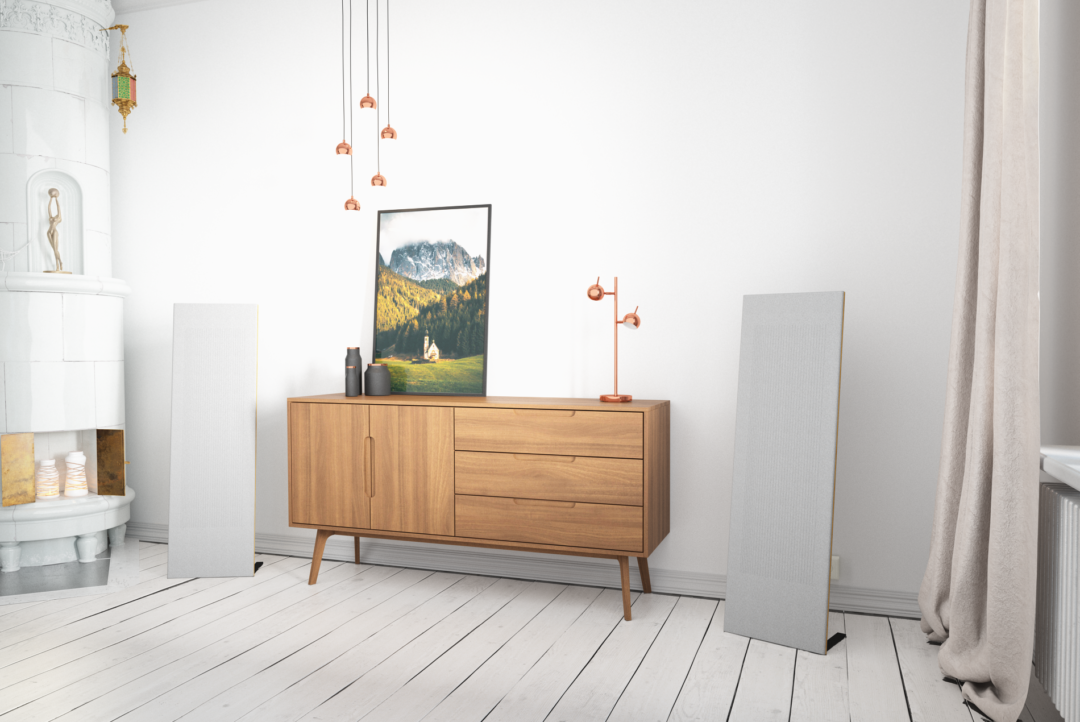
Since I wrote these words in 2018, a couple of new entries in the Maggie lineup have shaken things up. The first is the MG30.7, which, its enormous size notwithstanding, solved a goodly number of the sonic problems of larger Maggies. The second is the speaker I’m about to review.
The $1,600 LRS+ (add another $350 for a pair of its optional and, IMO, essential steel stands) is a new and improved version of Maggie’s LRS (Little Ribbon Speaker)—a four-foot-tall, one-foot-wide, one-inch-thick “baby” Magnepan, expressly designed to fit into smaller, condo-like spaces. Previously, the littlest Maggies, such as the MMGs, used a mix of quasi-ribbon tweeter and planar-magnetic mid/woof panels. The LRS did not. Both the tweeter and the mid/woof sections of its diaphragm were quasi-ribbon, which is to say they used featherweight 0.001″-thick strips of aluminum foil, rather than much heavier wires, to transmit the signal to the 0.0005″-thick Mylar substrate to which they were bonded.
The advantages of quasi-ribbon technology are manifold. In addition to conferring a sizable reduction in mass, which allows diaphragms to start and stop more quickly and lowers “drumhead” resonances, the aluminum-strip voice coils of quasi-ribbons run the entire length of the panel, top to bottom, and are closely spaced across the panel’s breadth. As a result, the electrical signals they are fed, and thus the magnetic fields they generate, are distributed more fully and uniformly to the Mylar diaphragm beneath them, improving accuracy, resolution, bandwidth, and power handling.
The $750 all-quasi-ribbon LRS was a breakthrough—a genuine improvement in the fidelity of the smallest-footprint Magneplanar. What made it special is what makes all the best Magneplanars special: its midrange was uncannily realistic sounding. What made it less than fully rave worthy was, well, everything else. Its upper midrange was rough and brightish, its top treble was rolled off, and its low bass and power range were virtually non-existent. Of course, we’re talking about a small two-way planar loudspeaker. For $750, it would be beyond greedy to expect it to run the gamut. Where the LRS played it was mostly marvelous, only it didn’t play everywhere and had a few coherence issues in spots where it did.
Comes now a new version of the LRS, the LRS+, with a substantially higher price tag than the original ($1,200 higher if you include, as I think you must, its optional stands). Those greatly improved stands aside, the Plus doesn’t look any different than the original LRS. Its dimensions and weight are nearly the same (the LRS+ is an inch narrower). It is still a small, two-way, quasi-ribbon dipole. It is still sold in left/right pairs. Its printed specs are identical. Why would any budget-minded LRS owner want to consider junking or re-purposing what he’s already got to buy this new offering?
Well, it sounds better is why. And not just a little better. Indeed, Wendell Diller (who has done the design work on Magneplanars since Jim Winey retired) has successfully addressed the very issues that marred the original’s resume. That roll-off in the treble? Not vanquished, but ameliorated. That roughness in the upper mids? Smoothed out like a dress shirt fresh from the ironing board. Reduction of that nosedive in the power range and midbass? Done as if by order (to inappropriately quote Fred C. Dobbs).
นับตั้งแต่ผมเขียนคำเหล่านี้ในปี 2018 ลำโพง Maggie รุ่นใหม่สองสามรุ่นก็สร้างความเปลี่ยนแปลงให้กับตลาด ลำโพงตัวแรกคือ MG30.7 ซึ่งแม้จะมีขนาดใหญ่ แต่ก็สามารถแก้ปัญหาด้านเสียงของ Maggie รุ่นใหญ่ได้หลายอย่าง ลำโพงตัวที่สองคือลำโพงที่ผมกำลังจะรีวิว
LRS+ ราคา 1,600 ดอลลาร์ (เพิ่มอีก 350 ดอลลาร์สำหรับขาตั้งเหล็กเสริม 2 ตัว ซึ่งในความเห็นของฉัน ขาตั้งเหล็กจำเป็น) เป็น LRS (ลำโพงแบบริบบิ้นเล็ก) รุ่นใหม่ที่ปรับปรุงแล้วของ Maggie ซึ่งเป็น Magnepan “ตัวเล็ก” สูง 4 ฟุต กว้าง 1 ฟุต หนา 1 นิ้ว ออกแบบมาโดยเฉพาะเพื่อให้พอดีกับพื้นที่ขนาดเล็กที่เหมือนคอนโด ก่อนหน้านี้ Maggie รุ่นเล็กที่สุด เช่น MMG ใช้ทวีตเตอร์แบบควาซิริบบอนผสมกับแผงกลาง/วูฟแม่เหล็กแบบระนาบ แต่ LRS ไม่เป็นเช่นนั้น ทั้งทวีตเตอร์และส่วนกลาง/วูฟของไดอะแฟรมเป็นแบบควาซิริบบอน ซึ่งหมายความว่าใช้แผ่นอลูมิเนียมฟอยล์หนา 0.001 นิ้วที่เบามาก แทนที่จะใช้สายที่หนักกว่ามาก เพื่อส่งสัญญาณไปยังซับสเตรตไมลาร์หนา 0.0005 นิ้วที่เชื่อมติดไว้
ข้อดีของเทคโนโลยีควาซิริบบอนนั้นมีมากมาย นอกจากจะช่วยลดมวลได้มาก ซึ่งช่วยให้ไดอะแฟรมเริ่มและหยุดได้เร็วขึ้นและลดเสียงสะท้อนของ “ดรัมเฮด” แล้ว คอยล์เสียงแบบแผ่นอลูมิเนียมของควาซิริบบอนยังวางตลอดความยาวของแผงตั้งแต่บนลงล่างและอยู่ห่างกันอย่างใกล้ชิดตลอดความกว้างของแผง ส่งผลให้สัญญาณไฟฟ้าที่ป้อนเข้าไปและสนามแม่เหล็กที่สร้างขึ้นกระจายไปยังไดอะแฟรมไมลาร์ที่อยู่ด้านล่างได้อย่างสมบูรณ์และสม่ำเสมอมากขึ้น ทำให้มีความแม่นยำ ความละเอียด แบนด์วิดท์ และการจัดการพลังงานที่ดีขึ้น
ลำโพง LRS แบบกึ่งริบบิ้นราคา 750 เหรียญสหรัฐถือเป็นการก้าวกระโดดครั้งยิ่งใหญ่ นับเป็นการปรับปรุงคุณภาพเสียงของ Magneplanar ที่มีขนาดเล็กที่สุดอย่างแท้จริง สิ่งที่ทำให้ลำโพงรุ่นนี้พิเศษคือสิ่งที่ทำให้ Magneplanar รุ่นที่ดีที่สุดทุกตัวพิเศษ เสียงกลางให้เสียงที่สมจริงอย่างน่าประหลาดใจ สิ่งที่ทำให้ลำโพงรุ่นนี้ไม่คู่ควรกับเสียงชื่นชมก็คือส่วนอื่นๆ เสียงกลางสูงนั้นหยาบและสดใส เสียงแหลมสูงนั้นถูกกลบไปหมด และเบสต่ำและช่วงกำลังเสียงแทบจะไม่มีอยู่เลย แน่นอนว่าเรากำลังพูดถึงลำโพงแบบสองทางขนาดเล็กที่มีลักษณะแบนราบ ด้วยราคา 750 เหรียญสหรัฐ การคาดหวังให้ลำโพงรุ่นนี้ทำงานได้ครบทุกย่านเสียงนั้นถือว่าโลภมาก ในส่วนที่ใช้ LRS นั้นก็ยอดเยี่ยมเป็นส่วนใหญ่ เพียงแต่ไม่สามารถเล่นได้ทุกที่และมีปัญหาด้านความสอดคล้องกันเล็กน้อยในจุดที่เล่นได้
ตอนนี้มี LRS รุ่นใหม่ LRS+ ออกมาแล้ว โดยราคาจะสูงกว่ารุ่นเดิมอย่างเห็นได้ชัด (ถ้ารวมขาตั้งเสริมด้วยก็จะแพงขึ้น 1,200 ดอลลาร์) แม้จะรวมขาตั้งที่ปรับปรุงใหม่แล้ว แต่ LRS Plus ก็ไม่ได้ดูแตกต่างจาก LRS รุ่นเดิมเลย ขนาดและน้ำหนักแทบจะเท่าเดิม (LRS+ แคบกว่า 1 นิ้ว) ยังคงเป็นเสาอากาศไดโพลสองทางขนาดเล็กแบบกึ่งริบบิ้น ยังคงขายเป็นคู่ซ้าย/ขวา สเปกที่พิมพ์ไว้เหมือนกันหมด ทำไมเจ้าของ LRS ที่คำนึงถึงงบประมาณจึงอยากทิ้งหรือใช้ของที่มีอยู่แล้วเพื่อซื้อรุ่นใหม่นี้ใหม่
เหตุผลที่ฟังดูดีขึ้นก็คือ ไม่ใช่แค่ดีขึ้นเล็กน้อยเท่านั้น เวนเดลล์ ดิลเลอร์ (ผู้ออกแบบ Magneplanars ตั้งแต่จิม ไวน์นีย์เกษียณ) ได้แก้ไขปัญหาที่ทำลายประวัติของต้นฉบับได้สำเร็จ เสียงที่ลดลงในเสียงแหลมนั้นไม่ได้หายไปไหน แต่กลับดีขึ้น ความหยาบกร้านในช่วงกลางสูงนั้นดูเรียบเนียนเหมือนเสื้อเชิ้ตที่เพิ่งออกจากโต๊ะรีดผ้า การลดความตกต่ำในช่วงกำลังและเสียงกลางต่ำนั้นทำราวกับว่าทำขึ้นตามคำสั่ง (เพื่ออ้างอิงคำพูดของเฟร็ด ซี. ด็อบส์อย่างไม่เหมาะสม)
What has changed in the design of the speaker to yield these improvements? You got me.
Here’s the problem with Magnepan. It is an Old School company and Wendell is an Old School guy. Despite incessant questions, he just won’t reveal what he (I think mistakenly) regards as state secrets. Where other outfits—Magico, for instance—are more than happy to show and tell you exactly what they’ve done to improve their transducers, Maggie and Wendell are not. Frankly, in today’s world this needs to change. Unless a new technology or device has a patent pending on it, there is no legitimate reason to play dumb. It only creates confusion, which isn’t good for anyone’s business.
Though I could make some guesses about what’s different in the Plus, they’d only be guesses. Maybe the crossover point and crossover parts have been changed, though, of course, it would still be a first-order slope, which is all that Maggie has ever used. Maybe panel tensioning and framing have been improved, and the ratio of membrane-space devoted to the lows and highs has been slightly altered. Maybe the Mylar used for the diaphragm has been reformulated or further thinned down. Ditto for the aluminum-foil voice-coil strips. The truth is I just don’t know.
The only change I’m sure of is the one to the height and mass of those optional stands, which are much sturdier and elevate the panels attached to them higher than Maggie’s traditional, ground-level, bent-metal feet (still supplied with the Plus). But the main sonic differences between Plus and Non-Plussed can’t be the result of their new shoes. Having had a good deal of experience with mass-loaded, after-market Magneplanar stands, I know their typical effects—and deeper bass and richer tone-color aren’t two of them. Yes, support systems can improve focus and resolution by lowering vibratory blur, but (typically) they also lean down timbre, particularly in the power range and midbass, which is the exact opposite of what I’m hearing from the Plusses.
It’s all rather frustrating for a reviewer and for a potential buyer. To market a speaker that looks almost exactly like the one you’ve already reviewed/bought but costs 66% more (with optional feet) and sounds a whole lot better without any explanation of what’s making for the improvements isn’t fair play. Unfortunately, that’s how it is. So, with the understanding that I’m unable to tell you what produces them, let’s talk about the sonic changes in the Plus.
Perhaps the first thing you will notice (I certainly did) is the difference in the low end. The LRS had none—or none below 90–100Hz or so. Which meant that what could you hear of lower-pitched instruments or instruments playing in their bottom octaves was almost completely “implied” by harmonics. The full power, color, and impact of things like double basses, bass drums, piano, organ, tuba, bass clarinet, bassoon, contrabassoon, trombone, cello, French horn, harp—virtually the entire underside of the orchestra—just weren’t there. It was like listening to music performed by wraiths, like those ghosts and skeletons that cavort to the player-piano version of “Danse macabre” in Renoir’s Rules of the Game.
When properly set up (for which, see below), the LRS+ offers a considerably more complete sonic picture. No, it won’t dip much lower than 60Hz (at least it won’t with authority and linearity), but in the 60Hz–200Hz range, the lower part of the power range, it is a much more robust, linear, detailed, and lifelike critter than the original. It gives you back a good deal of the foundation that the LRS robbed you of. It gives you back much of the power of the orchestra (to re-coin a phrase).
การออกแบบของลำโพงมีการเปลี่ยนแปลงอะไรบ้างเพื่อให้เกิดการปรับปรุงเหล่านี้? คุณจับใจฉันได้
นี่คือปัญหาของ Magnepan ซึ่งเป็นบริษัทที่ยึดมั่นในแนวทางแบบเก่าและ Wendell เป็นคนยึดมั่นในแนวทางแบบเก่า แม้ว่าจะมีคำถามมากมาย แต่เขาก็ยังไม่ยอมเปิดเผยสิ่งที่เขา (ฉันคิดว่าเขาคิดผิด) ว่าเป็นความลับของรัฐ ในขณะที่บริษัทอื่นๆ เช่น Magico ยินดีที่จะแสดงและบอกคุณว่าพวกเขาทำอะไรเพื่อปรับปรุงตัวแปลงสัญญาณของตนบ้าง แต่ Maggie และ Wendell ไม่เป็นเช่นนั้น พูดตรงๆ ว่าในโลกปัจจุบันนี้ จำเป็นต้องเปลี่ยนแปลง เว้นแต่เทคโนโลยีหรืออุปกรณ์ใหม่จะมีสิทธิบัตรรอการอนุมัติ ไม่เช่นนั้นก็ไม่มีเหตุผลอันสมควรที่จะแกล้งโง่ มันสร้างความสับสน ซึ่งไม่ดีต่อธุรกิจของใครทั้งสิ้น
แม้ว่าฉันจะเดาได้ว่ารุ่น Plus มีอะไรที่แตกต่างไปบ้าง แต่ก็เป็นเพียงการเดาเท่านั้น อาจเป็นไปได้ว่าจุดครอสโอเวอร์และชิ้นส่วนครอสโอเวอร์ได้รับการเปลี่ยนแปลง แต่แน่นอนว่ามันยังคงเป็นความลาดเอียงในลำดับแรก ซึ่งเป็นสิ่งเดียวที่แม็กกี้เคยใช้ อาจเป็นไปได้ว่าการปรับความตึงของแผงและการจัดกรอบได้รับการปรับปรุง และอัตราส่วนของพื้นที่เมมเบรนที่อุทิศให้กับเสียงต่ำและเสียงสูงได้รับการเปลี่ยนแปลงเล็กน้อย อาจเป็นไปได้ว่าไมลาร์ที่ใช้สำหรับไดอะแฟรมได้รับการปรับปรุงใหม่หรือทำให้บางลงอีก เช่นเดียวกับแถบคอยล์เสียงอลูมิเนียมฟอยล์ ความจริงคือฉันไม่รู้
การเปลี่ยนแปลงเพียงอย่างเดียวที่ฉันแน่ใจคือการเปลี่ยนแปลงในเรื่องความสูงและมวลของขาตั้งเสริม ซึ่งแข็งแรงกว่ามากและทำให้แผงที่ติดอยู่สูงขึ้นกว่าขาตั้งโลหะโค้งแบบติดพื้นระดับพื้นแบบดั้งเดิมของ Maggie (ซึ่งยังคงมาพร้อมกับรุ่น Plus) แต่ความแตกต่างด้านเสียงหลักระหว่างรุ่น Plus และรุ่น Non-Plussed นั้นไม่สามารถเป็นผลมาจากฐานใหม่ของพวกเขาได้ เนื่องจากมีประสบการณ์ที่ดีพอสมควรกับขาตั้ง Magneplanar หลังการขายที่โหลดมวลมาก ฉันจึงรู้ถึงผลกระทบทั่วไปของขาตั้งเหล่านี้—และเบสที่ลึกขึ้นและโทนสีที่เข้มข้นขึ้นก็ไม่ใช่สองในนั้น ใช่ ระบบรองรับสามารถปรับปรุงโฟกัสและความละเอียดได้โดยลดความเบลอจากการสั่นสะเทือน แต่ (โดยทั่วไป) ระบบเหล่านี้ยังทำให้เสียงมีความนุ่มนวลลง โดยเฉพาะในช่วงกำลังและเสียงเบสกลาง ซึ่งตรงกันข้ามกับสิ่งที่ฉันได้ยินจากรุ่น Pluss
ทั้งหมดนี้ค่อนข้างน่าหงุดหงิดสำหรับนักวิจารณ์และผู้ซื้อที่มีแนวโน้มจะซื้อ การตลาดลำโพงที่มีลักษณะเกือบจะเหมือนกับลำโพงที่คุณเคยวิจารณ์หรือซื้อไปแล้วทุกประการ แต่มีราคาแพงกว่า 66% (พร้อมขาตั้งเสริม) และเสียงดีขึ้นมากโดยไม่มีคำอธิบายว่าอะไรทำให้ดีขึ้น ถือเป็นการกระทำที่ไม่ยุติธรรม น่าเสียดายที่มันเป็นแบบนั้น ดังนั้น ด้วยความเข้าใจที่ว่าฉันไม่สามารถบอกคุณได้ว่าอะไรทำให้ลำโพงเหล่านี้ดีขึ้น มาพูดถึงการเปลี่ยนแปลงด้านเสียงในรุ่น Plus กันดีกว่า
บางทีสิ่งแรกที่คุณจะสังเกตเห็น (ฉันสังเกตเห็นแน่นอน) คือความแตกต่างในระดับต่ำ LRS ไม่มีเลย—หรือไม่มีเลยต่ำกว่า 90–100Hz หรือประมาณนั้น ซึ่งหมายความว่าสิ่งที่คุณได้ยินจากเครื่องดนตรีที่มีระดับเสียงต่ำหรือเครื่องดนตรีที่เล่นในอ็อกเทฟต่ำสุดนั้นแทบจะเป็นนัยโดยฮาร์โมนิกทั้งหมด พลัง สีสัน และผลกระทบของสิ่งต่างๆ เช่น ดับเบิลเบส กลองเบส เปียโน ออร์แกน ทูบา คลาริเน็ตเบส บาสซูน คอนทราบาสซูน ทรอมโบน เชลโล ฮอร์นฝรั่งเศส ฮาร์ป—แทบทั้งส่วนล่างของวงออร์เคสตรา—ไม่มีเลย มันเหมือนกับการฟังเพลงที่แสดงโดยวิญญาณ เช่น ผีและโครงกระดูกที่เต้นตามเพลง “Danse macabre” เวอร์ชันผู้เล่นเปียโนในหนังสือ Rules of the Game ของเรอนัว ร์
เมื่อตั้งค่าอย่างถูกต้อง (ซึ่งดูด้านล่าง) LRS+ จะให้ ภาพเสียงที่สมบูรณ์ยิ่งขึ้น อย่างเห็นได้ชัดไม่ มันจะไม่ลดลงต่ำกว่า 60Hz มากนัก (อย่างน้อยก็จะไม่ลดลงต่ำกว่านั้นด้วยอำนาจและความเป็นเส้นตรง) แต่ในช่วง 60Hz–200Hz ซึ่งเป็นช่วงพลังงานที่ต่ำกว่านั้น มันจะเป็นสิ่งมีชีวิตที่แข็งแกร่ง เป็นเส้นตรง มีรายละเอียด และเหมือนจริงมากกว่าตัวดั้งเดิมมาก มันช่วยให้คุณได้รากฐานกลับคืนมามาก ซึ่ง LRS ขโมยไปจากคุณ มันทำให้คุณได้พลังของวงออร์เคสตรากลับคืนมามาก (เพื่อสร้างสรรค์วลีใหม่)

Now, let me be clear about this. No Maggie, certainly not its smallest offering, is going to sound like a Stenheim Alumine Five SE or an Estelon X Diamond II in the power range and low bass. It just isn’t going to deliver the color, dynamics, extension, body, and the ensuing chills and thrills of those great cones-in-a-box loudspeakers, particularly on electronically amplified (i.e., rock and blues) music. Oh, you’ll get some lifelike impact from the Plusses, for sure—enough to surprise and delight you, particularly if you’re used to listening to the original LRSes—and you’ll get fuller color and definition (along with superb transient detail) in the midbass on acoustic instruments like plucked or bowed bass. You just won’t get the whole gamut of that instrument below 60Hz or so, and you won’t get any of the near-subterranean reach of synth or five-string electric bass on great LPs like Brothers in Arms or Let’s Rock or Sinematic.
You could, of course, try subwoofing. But mating a Maggie, any Maggie, with a subwoofer is a very tricky proposition. Usually, in a Maggie-based system, the boxiness, floor bounce, and induced room resonances of a direct-radiating sub immediately call attention to it as a sound source, which is the exact opposite of what Magneplanars do on their own. In addition, no matter where and how steeply you cross them over, the “masking” effects that subs generate in the crossover region and above can rob Maggies (and dipoles in general) of enough transparency, tonal neutrality, and resolution to play havoc with the boxless purity of their un-woofed sound and invalidate the very reasons you bought them. On top of this, a sub adds complexity to an LRS+ system and eats up space. Why purchase an inch-wide “baby” planar in the first place if you’re gonna add hefty cones-in-boxes to the system?
The second thing you’ll notice (or maybe the first, depending on your listening taste) is the difference in the upper midrange and treble. What was rough and curtailed is now smoother, a bit more extended, and better blended with the rest of the spectrum. The difference is almost as profound as the difference on the bottom, and in some ways more important. After all, you can live with a speaker that has little-to-no bass and virtually no top treble—or what’s an LS3/5A for? It’s a lot harder to live with a speaker that is rough and irritating in the 1kHz-to-4kHz range, the area where the ear is most sensitive.
Now, I wouldn’t say the original LRS was shrill. It’s just that the complete absence of bass tends to turn a spotlight on nonlinearities in the upper mids and lower treble, making them stand out more than they would if they were counterbalanced by richer, more natural low-end/power-range timbre, body, and impact. As a result, there was a brightness and forwardness to the LRS’ presentation that did not, as I just said, verge into outright unpleasantness (or did not do so often) but was, nonetheless, audible. This upper-midrange roughness was made even more apparent by the LRS’ nosedive in the top treble, which (like the absence of bass) tended to isolate and spotlight the upper mids.
Robbed of a needed bit of treble extension and linearity, the LRS was altogether too lean and limited on top. The Plus is less so. As with its bottom octaves, the new LRS restores a measure of smoothness, sweetness, air, and life to the high end of the orchestra. You can hear this on virtually any recording of violin, viola, flute, clarinet, oboe, trumpet, English horn, harpsichord, or upper-octave piano. Add this newfound top and bottom smoothness and extension to what was already a fabulously lifelike midrange, and you get a loudspeaker that, on a great recording, can almost fool you into thinking you’re listening to the real deal.
Take for example, Ornette Coleman’s wonderfully idiosyncratic cover of the Gershwins’ “Embraceable You” from This Is Our Music [Atlantic/Wax Time]. Through the best box speakers this is a very natural sounding track, but even the best box speakers don’t do timbre the way Maggies do. It’s like the difference between hearing music in a good hall and hearing the same music played out of doors. Through the Maggies, a layer of box, driver, room coloration is lifted. As a result, the unique plasticky timbre of Coleman’s Grafton alto sax and the leaner, less robust color and power of Don Cherry’s pocket trumpet are reproduced with a neutrality and fidelity that most cones-in-a-box speakers don’t offer to quite the same degree. Through dynamic speakers, Coleman’s alto sounds just a bit more like a standard metal instrument; Cherry’s pocket trumpet a bit more like a full-sized one. Granted, this added richness and luster may be more appealing to many listeners (including me, sometimes), but the fact remains that it is less true to life.
ตอนนี้ขอพูดให้ชัดเจนก่อนว่า Maggie ไม่ใช่ลำโพงรุ่นเล็กที่สุดอย่างแน่นอน เพราะจะให้เสียงที่เหมือนกับลำโพงรุ่นStenheim Alumine Five SEหรือEstelon X Diamond IIในด้านกำลังขับและเบสต่ำ ลำโพงรุ่นนี้ไม่สามารถถ่ายทอดสีสัน ไดนามิก ส่วนขยาย ตัวเครื่อง และความตื่นตาตื่นใจที่ตามมาของลำโพงแบบกรวยในกล่องที่ยอดเยี่ยมเหล่านี้ได้ โดยเฉพาะอย่างยิ่งในเพลงที่ขยายเสียงด้วยระบบอิเล็กทรอนิกส์ (เช่น ร็อกและบลูส์) โอ้ คุณจะได้สัมผัสกับเอฟเฟกต์ที่สมจริงจากลำโพงรุ่น Pluss อย่างแน่นอน ซึ่งเพียงพอที่จะทำให้คุณประหลาดใจและเพลิดเพลิน โดยเฉพาะอย่างยิ่งหากคุณเคยฟังลำโพงรุ่น LRS ดั้งเดิม และคุณจะได้สีสันและความชัดเจนที่เต็มอิ่มยิ่งขึ้น (พร้อมกับรายละเอียดการเปลี่ยนแปลงที่ยอดเยี่ยม) ในช่วงกลางเบสของเครื่องดนตรีอะคูสติก เช่น เบสที่ดีดหรือโค้ง คุณจะไม่สามารถได้ยินเสียงเครื่องดนตรีทั้งหมดที่ต่ำกว่า 60Hz หรือประมาณนั้นได้ และคุณจะไม่ได้ยินเสียงที่ใกล้เคียงกับเสียงซินธ์หรือเบสไฟฟ้าห้าสายในอัลบั้มยอดนิยมอย่างBrothers in ArmsหรือLet’s Rock หรือSinematic
แน่นอนว่าคุณสามารถลองซับวูฟเฟอร์ได้ แต่การจับคู่ Maggie กับซับวูฟเฟอร์นั้นเป็นเรื่องที่ยุ่งยากมาก โดยปกติแล้ว ในระบบที่ใช้ Maggie ความเป็นสี่เหลี่ยม การกระเด้งของพื้น และเสียงสะท้อนในห้องที่เกิดจากซับวูฟเฟอร์ที่แผ่ออกมาโดยตรงจะดึงความสนใจไปที่ซับวูฟเฟอร์ทันทีในฐานะแหล่งกำเนิดเสียง ซึ่งตรงกันข้ามกับสิ่งที่ Magneplanar ทำด้วยตัวเอง นอกจากนี้ ไม่ว่าคุณจะข้ามซับวูฟเฟอร์ไปที่จุดไหนและชันแค่ไหน เอฟเฟกต์ “การบดบัง” ที่ซับวูฟเฟอร์สร้างขึ้นในบริเวณครอสโอเวอร์และด้านบนอาจทำให้ Maggie (และไดโพลโดยทั่วไป) ขาดความโปร่งใส ความเป็นกลางของโทนเสียง และความละเอียดเพียงพอที่จะเล่นงานความบริสุทธิ์ของเสียงที่ไม่มีกล่องของ Maggie และทำให้เหตุผลที่คุณซื้อซับวูฟเฟอร์เหล่านี้ไม่ถูกต้อง นอกจากนี้ ซับวูฟเฟอร์ยังเพิ่มความซับซ้อนให้กับระบบ LRS+ และกินพื้นที่อีกด้วย ทำไมต้องซื้อซับวูฟเฟอร์แบบ “เบบี้” ที่มีความกว้าง 1 นิ้วตั้งแต่แรก หากคุณจะเพิ่มกรวยขนาดใหญ่ในกล่องให้กับระบบ?
สิ่งที่สองที่คุณจะสังเกตเห็น (หรืออาจเป็นอย่างแรก ขึ้นอยู่กับรสนิยมในการฟังของคุณ) คือความแตกต่างในช่วงกลางเสียงสูงและเสียงแหลม ซึ่งเคยหยาบและถูกตัดทอนลง ตอนนี้ก็นุ่มนวลขึ้น ขยายออกไปอีกเล็กน้อย และผสมผสานกับย่านความถี่อื่นๆ ได้ดีขึ้น ความแตกต่างนั้นแทบจะลึกซึ้งเท่ากับความแตกต่างในช่วงเสียงต่ำ และในบางแง่ก็สำคัญกว่าด้วยซ้ำ เพราะท้ายที่สุดแล้ว คุณสามารถใช้ลำโพงที่มีเสียงเบสน้อยหรือแทบไม่มีเลยและเสียงแหลมสูงแทบจะไม่มีเลย หรือLS3/5Aมีไว้ทำอะไรล่ะ? การใช้ชีวิตกับลำโพงที่หยาบและน่ารำคาญในช่วงความถี่ 1kHz ถึง 4kHz ซึ่งเป็นช่วงที่หูไวต่อเสียงมากที่สุดนั้นยากกว่ามาก
ตอนนี้ ฉันจะไม่บอกว่า LRS ดั้งเดิมนั้นแหลมสูง มันเป็นเพียงเพราะการไม่มีเบสเลย ทำให้เสียงกลางสูงและเสียงแหลมต่ำกลายเป็นจุดสนใจ ทำให้เสียงเหล่านี้โดดเด่นกว่าที่ควรจะเป็นหากมีเสียงแหลม เสียงเบส และเสียงกระแทกที่เป็นธรรมชาติและเข้มข้นกว่ามาชดเชยกัน ผลลัพธ์ก็คือ การนำเสนอของ LRS นั้นสดใสและตรงไปตรงมา ซึ่งไม่ได้ทำให้เสียงนั้นน่ารำคาญ (หรือไม่ค่อยเกิดขึ้นบ่อยนัก) อย่างที่ฉันเพิ่งพูดไป แต่ยังคงได้ยินได้ ความหยาบของเสียงกลางสูงนี้ชัดเจนยิ่งขึ้นเมื่อเสียงกลางสูงของ LRS ตกลงมา ซึ่ง (เช่นเดียวกับการไม่มีเบส) มีแนวโน้มที่จะแยกเสียงกลางสูงออกจากกันและโดดเด่น
เนื่องจากขาดการขยายเสียงแหลมและความเป็นเส้นตรงที่จำเป็นไปเล็กน้อย LRS จึงมีความบางและจำกัดที่ด้านบนเกินไป ส่วน Plus นั้นไม่เป็นเช่นนั้น เช่นเดียวกับช่วงอ็อกเทฟที่ต่ำ LRS ใหม่จะคืนความนุ่มนวล ความไพเราะ ความมีชีวิตชีวาให้กับช่วงเสียงสูงของวงออร์เคสตรา คุณสามารถได้ยินสิ่งนี้ได้จากการบันทึกเสียงไวโอลิน วิโอลา ฟลุต คลาริเน็ต โอโบ ทรัมเป็ต อิงลิชฮอร์น ฮาร์ปซิคอร์ด หรือเปียโนช่วงอ็อกเทฟบนแทบทุกแบบ เพิ่มความนุ่มนวลและการขยายเสียงช่วงบนและช่วงล่างที่ค้นพบใหม่นี้ให้กับเสียงกลางที่เหมือนจริงอย่างเหลือเชื่ออยู่แล้ว แล้วคุณจะได้ลำโพงที่เมื่อบันทึกเสียงได้ดีแล้ว แทบจะหลอกคุณให้คิดว่าคุณกำลังฟังของจริงอยู่เลย
ตัวอย่างเช่น Ornette Coleman คัฟเวอร์เพลง Embraceable You ของ Gershwins จากThis Is Our Music [Atlantic/Wax Time] ซึ่งเป็นเพลงที่ฟังดูเป็นธรรมชาติมากผ่านลำโพงกล่องที่ดีที่สุด แต่ลำโพงกล่องที่ดีที่สุดก็ไม่สามารถให้เสียงแบบ Maggies ได้ มันเหมือนกับความแตกต่างระหว่างการฟังเพลงในห้องโถงที่ดีกับการฟังเพลงเดียวกันที่เล่นกลางแจ้ง ผ่านลำโพงกล่อง Maggies ชั้นของสีกล่อง ไดรเวอร์ และห้องจะถูกยกออก เป็นผลให้เสียงพลาสติกที่เป็นเอกลักษณ์ของแซ็กโซโฟนอัลโต Grafton ของ Coleman และสีที่บางกว่าและไม่แข็งแรงเท่าและทรงพลังของทรัมเป็ตพกพาของ Don Cherry ถูกถ่ายทอดออกมาด้วยความเป็นกลางและความเที่ยงตรงที่ลำโพงแบบกรวยในกล่องส่วนใหญ่ไม่สามารถให้ได้ในระดับเดียวกัน ผ่านลำโพงไดนามิก เสียงอัลโตของ Coleman ฟังดูคล้ายกับเครื่องดนตรีโลหะมาตรฐานเล็กน้อย ทรัมเป็ตขนาดพกพาของเชอร์รี่นั้นดูคล้ายทรัมเป็ตขนาดปกติมากกว่า ถึงแม้ว่าความเข้มข้นและความแวววาวที่เพิ่มเข้ามานี้จะดึงดูดผู้ฟังหลายๆ คนได้มากกว่า (รวมทั้งฉันด้วยในบางครั้ง) แต่ความจริงก็คือทรัมเป็ตนั้นไม่ได้สมจริงเท่าไรนัก
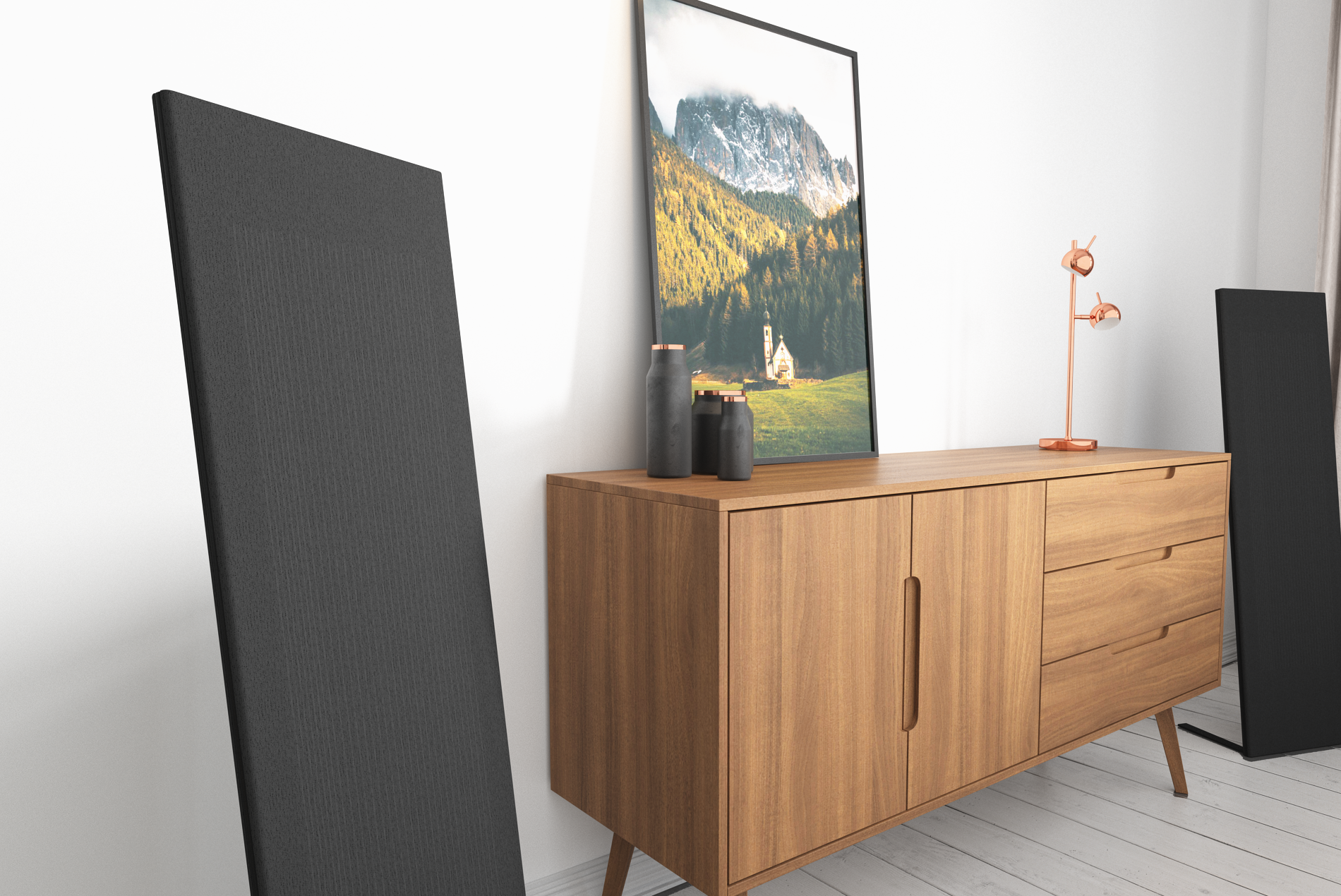
The same is the case with vocalists. Of course, Maggies are famous for the naturalness with which they reproduce the human voice. (Some of the most lifelike reproduction of male and female singers I’ve experienced in better than 50 years of listening has been through various iterations of Magneplanars—Neil Diamond singing “Girl You’ll Be A Woman Soon” via Maggie 1Ds; Lou Reed singing “Walk on the Wild Side” via MGIIs; Dolly Parton, Emmylou Harris, and Linda Ronstadt singing various cuts from Trio via MG3.5s; Son House singing “Death Letter” via MG30.7s; countless other vocalists through MG1.6s and MG1.7s.) Because of their diminutive size and smaller panels, the Plusses will not only reproduce singers with Magneplanars’ characteristic in-the-room-with-you realism (try Ry Cooder and Taj Mahal on “Deep Sea Diver”—a bawdy tune that, as TAS’ Jeff Wilson wryly observed, isn’t likely to make it into the next Cousteau Society documentary); they will also do so with tighter image focus than taller, wider, larger-panel Maggies.
Before discussing the Plusses’ downside, I need to say a word about setup. In the old days, Maggies were typically listened to head-on, without any toe-in, for greatest neutrality. A lot of folks still prefer this alignment, but…it won’t work ideally with the LRS or the LRS+. Because of the smaller size of their quasi-ribbon panels and the fact they are two-ways, you may end up with either too much bass or too much treble and not enough in between—i.e., with too dark or too bright a tonal palette—if you don’t cant the speakers in a fair amount (at least 15–20 degrees). Though this may be room-dependent, Maggie also recommends that the speakers be situated with their tweeters (visible via a flashlight shined through the grille as the section of the panel with narrower, more closely aligned foil strips) to the outside and away from the wall and, with the requisite toe-in, their woofers to the inside and closer to the wall. My description of the sound of the LRS+ reflects Maggie’s set-up recommendations, albeit with toe-in painstakingly tweaked almost degree by degree until I achieved a balance that was neither too top-down or too bottom-up but audibly and measurably close to neutral.
Now for the downside. Let’s face it: Any planar (any speaker) that costs under a grand is going to have its limitations. Though they are considerably less severe than those of the original LRS, the Plus still has a few. I’ve already mentioned its restricted low bass. Though this may be ameliorated slightly by situating the speakers closer to the backwall (and taking advantage of a bit of room gain), the Plus is never going to go down with satisfactory linearity into the 40Hz–50Hz octave (and 30Hz and 20Hz you can forget about). Its improvement is more or less confined to the midbass (and up), which is a big step forward over the original but still nothing like what you’ll get (for 72 times the dough) from a Stenheim Alumine Five SE.
Again, its upper mids and lower treble are smoother and less roughed up than those of the LRS, but since the top treble is still a bit rolled, the Plusses can sound a little “exposed” on cymbal or flute or high-pitched violin, as if some of the air, lilt, and native harmonic sweetness and extension of the instruments have been squeezed down or out of the music. Nonetheless, this is still an area where the Plus is substantially improved over the LRS.
Like all Magneplanars, but more so, the LRS+ has dynamic constraints. The excursion limits of Maggie’s panels are considerably greater than those of the best cone drivers. On top of which, the smaller panels of the Plus mean less air is being moved to begin with. Though I haven’t been able to make them clip, even at very loud levels, these baby Maggies aren’t going to maintain 100+dB average SPLs (or 105+dB peaks) without complaint. Also, with a sensitivity of about 83dB they are going to need plenty of power.
An additional limitation associated with the speaker’s diminutive size is soundstage dimensions. This is not as much of a problem when it comes to depth and width, but it does show up early and often when it comes to image height. Sonically, this is a mix of good and bad. As I already said, on voices you don’t get the typical Maggie “bigness,” which will be a positive thing for many listeners. Singers are less outsized and better focused through the LRS+. On the other hand, so are certain naturally large instruments, such as pianos and drumkits. In a speaker of these dimensions, you can only expect that so many attributes of acoustic instruments will be reproduced with complete realism—and the sheer volume of a nine-foot concert grand isn’t one of them.
Bottom line: The LRS+ is a big improvement over the original LRS. It adds enough color, power, detail, and extension in the midbass and smoothness and coherence in the upper mids and lower treble to make it far more of a true full-range contender than its predecessor. Though you can do better in the Maggie line for about three times the money (the MG1.7i), you’re not going to get the same condo-friendly form factor from the 1.7, which is a foot and a half taller and a half foot wider than the Plus. In cone speakers, you can find much smaller boxes at this price point and, for a bit more money, some self-powered models, but not a one of them that I’ve heard comes as close to sounding like the real thing as this baby Maggie. For folks who are new to the high end or have small listening spaces or are working with limited budgets or just want a second high-fidelity system in a different spot for music or TV, I can think of no better choice for the dollar, particularly if you treasure the sound of acoustic instruments. Its limitations notwithstanding, this is a great little loudspeaker and a sure-fire nominee for one of TAS’ 2022 Product of the Year Awards.
กรณีของนักร้องก็เหมือนกัน แน่นอนว่า Maggies มีชื่อเสียงในเรื่องความเป็นธรรมชาติในการถ่ายทอดเสียงของมนุษย์ (การทำซ้ำนักร้องชายและหญิงที่เหมือนจริงที่สุดบางส่วนที่ฉันเคยฟังมาในช่วง 50 ปีที่ผ่านมานั้นมาจาก Magneplanars หลายเวอร์ชัน เช่น Neil Diamond ร้องเพลง “Girl You’ll Be A Woman Soon” ผ่าน Maggie 1Ds, Lou Reed ร้องเพลง “Walk on the Wild Side” ผ่าน MGIIs, Dolly Parton, Emmylou Harris และ Linda Ronstadt ร้องเพลงต่างๆ จากTrioผ่าน MG3.5s, Son House ร้องเพลง “Death Letter” ผ่าน MG30.7s และนักร้องคนอื่นๆ อีกนับไม่ถ้วนผ่าน MG1.6 และ MG1.7s) เนื่องจากมีขนาดเล็กและแผงเสียงที่เล็กกว่า Plusses จึงไม่เพียงแต่จะทำซ้ำนักร้องที่มีความสมจริงตามแบบฉบับของ Magneplanars (ลองฟัง Ry Cooder และ Taj Mahal ในเพลง “Deep Sea Diver” ซึ่งเป็นเพลงหยาบคายที่ Jeff Wilson จาก TAS สังเกตอย่างขบขันว่าไม่น่าจะมีอยู่ในเวอร์ชันต่อไป สารคดี Cousteau Society) พวกเขาจะทำเช่นนั้นด้วยการโฟกัสภาพที่เข้มงวดกว่า Maggies ที่สูง กว้าง และใหญ่กว่า
ก่อนจะพูดถึงข้อเสียของ Plusses ฉันต้องพูดสักคำเกี่ยวกับการตั้งค่า ในสมัยก่อน Maggies มักจะถูกฟังโดยตรงโดยไม่มีการโทอินเพื่อให้เป็นกลางมากที่สุด หลายคนยังคงชอบการจัดตำแหน่งนี้ แต่…มันจะไม่ทำงานได้ดีกับ LRS หรือ LRS+ เนื่องจากแผงกึ่งริบบิ้นมีขนาดเล็กกว่าและข้อเท็จจริงที่ว่าเป็นแบบสองทาง คุณอาจลงเอยด้วยเสียงเบสหรือเสียงแหลมมากเกินไปและไม่เพียงพอระหว่างนั้น—เช่น จานสีโทนมืดหรือสว่างเกินไป—หากคุณไม่เอียงลำโพงในปริมาณที่เหมาะสม ( อย่างน้อย 15–20 องศา) แม้ว่าสิ่งนี้อาจขึ้นอยู่กับห้อง แต่แม็กกี้ยังแนะนำให้วางลำโพงโดยให้ทวีตเตอร์ (มองเห็นได้ผ่านไฟฉายที่ส่องผ่านตะแกรงในส่วนของแผงที่มีแถบฟอยล์ที่แคบกว่าและเรียงชิดกันมากขึ้น) อยู่ด้านนอกและห่างจากผนัง และด้วยการวางตำแหน่งโทอินตามที่จำเป็น ให้วางวูฟเฟอร์ไว้ด้านในและใกล้กับผนังมากขึ้น คำอธิบายของฉันเกี่ยวกับเสียงของ LRS+ สะท้อนคำแนะนำในการติดตั้งของแม็กกี้ แม้ว่าจะปรับตำแหน่งโทอินอย่างพิถีพิถันเกือบทีละองศาจนกระทั่งได้สมดุลที่ไม่วางจากบนลงล่างหรือจากล่างขึ้นบนเกินไป แต่ให้ใกล้เคียงกับความเป็นกลางอย่างเห็นได้ชัดและวัดได้
ตอนนี้มาถึงข้อเสียกันบ้าง ยอมรับกันตามตรงว่า ลำโพง Planar (รุ่นใดก็ได้) ที่มีราคาต่ำกว่าพันเหรียญนั้นจะมีข้อจำกัดอยู่บ้าง แม้ว่าลำโพงรุ่นนี้จะไม่เลวร้ายเท่าลำโพง LRS รุ่นเดิมอย่างเห็นได้ชัด แต่รุ่น Plus ยังคงมีข้อจำกัดอยู่บ้าง ฉันได้กล่าวถึงเสียงเบสต่ำที่จำกัดไปแล้ว แม้ว่าการวางลำโพงไว้ใกล้กับผนังด้านหลังมากขึ้น (และใช้ประโยชน์จากพื้นที่เพิ่มขึ้นเล็กน้อย) อาจช่วยบรรเทาปัญหานี้ได้เล็กน้อย แต่รุ่น Plus ก็ไม่มีทางที่จะลดระดับลงได้อย่างน่าพอใจด้วยความเป็นเส้นตรงในช่วงอ็อกเทฟ 40Hz–50Hz (และ 30Hz และ 20Hz คุณก็ลืมมันไปได้เลย) การปรับปรุงนั้นจำกัดอยู่แค่เสียงเบสกลาง (และสูงขึ้น) ซึ่งถือเป็นก้าวสำคัญเมื่อเทียบกับลำโพงรุ่นเดิม แต่ก็ยังไม่เทียบเท่ากับสิ่งที่คุณจะได้รับ (ด้วยราคาที่แพงกว่า 72 เท่า) จากลำโพง Stenheim Alumine Five SE
เสียงกลางสูงและเสียงแหลมต่ำมีความนุ่มนวลและหยาบกร้านน้อยกว่า LRS แต่เนื่องจากเสียงแหลมสูงยังคงมีความกลมกลืนอยู่เล็กน้อย เสียง Plusses จึงอาจฟังดู “เปิดเผย” เล็กน้อยเมื่อใช้ฉาบ ขลุ่ย หรือไวโอลินที่มีเสียงสูง ราวกับว่าเสียงลม เสียงลีลา ความหวานของฮาร์โมนิกดั้งเดิมและการขยายเสียงของเครื่องดนตรีบางส่วนถูกบีบให้เบาลงหรือหายไปจากดนตรี อย่างไรก็ตาม นี่เป็นส่วนที่ Plus ได้รับการปรับปรุงให้ดีขึ้นอย่างมากเมื่อเทียบกับ LRS
เช่นเดียวกับ Magneplanars ทั้งหมด แต่มีอะไรมากกว่านั้น LRS+ มีข้อจำกัดแบบไดนามิก ขีดจำกัดการเคลื่อนที่ของแผง Maggie นั้นมากกว่าไดรเวอร์กรวยที่ดีที่สุดอย่างมาก ยิ่งไปกว่านั้น แผงที่มีขนาดเล็กกว่าของ Plus หมายความว่ามีการเคลื่อนย้ายอากาศน้อยลงในตอนแรก แม้ว่าฉันจะไม่สามารถทำให้มันตัดได้ แม้แต่ในระดับเสียงที่ดังมาก แต่ Maggies ตัวน้อยเหล่านี้จะไม่รักษาระดับ SPL เฉลี่ย 100+dB (หรือจุดสูงสุด 105+dB) โดยไม่บ่น นอกจากนี้ ด้วยความไวประมาณ 83dB จึงต้องใช้พลังงานมาก
ข้อจำกัดเพิ่มเติมที่เกี่ยวข้องกับขนาดเล็กของลำโพงคือขนาดของเวทีเสียง ซึ่งไม่ใช่ปัญหาใหญ่นักเมื่อต้องพูดถึงความลึกและความกว้าง แต่มักจะปรากฏขึ้นในช่วงต้นและบ่อยครั้งเมื่อต้องพูดถึงความสูงของภาพ ในด้านเสียง นี่เป็นการผสมผสานระหว่างข้อดีและข้อเสีย อย่างที่ฉันได้กล่าวไปแล้วว่า ในเสียงร้อง คุณจะไม่ได้เสียงที่ “ใหญ่” แบบแม็กกี้ทั่วไป ซึ่งจะเป็นสิ่งที่ดีสำหรับผู้ฟังหลายๆ คน นักร้องจะมีขนาดที่เล็กกว่าและมีสมาธิที่ดีกว่าเมื่อใช้ LRS+ ในทางกลับกัน เครื่องดนตรีบางชิ้นที่มีขนาดใหญ่ตามธรรมชาติ เช่น เปียโนและชุดกลอง ก็มีขนาดที่ใหญ่เช่นกัน ในลำโพงที่มีขนาดขนาดนี้ คุณคาดหวังได้เพียงว่าคุณลักษณะต่างๆ ของเครื่องดนตรีอะคูสติกจะถูกถ่ายทอดออกมาได้อย่างสมจริงอย่างสมบูรณ์ และเสียงที่ดังมากของเครื่องเล่นคอนเสิร์ตแกรนด์ขนาด 9 ฟุตก็ไม่ใช่หนึ่งในนั้น
สรุป: LRS+ ถือเป็นการปรับปรุงครั้งใหญ่เมื่อเทียบกับ LRS รุ่นเดิม โดยเพิ่มสีสัน พลัง รายละเอียด และส่วนขยายในระดับกลางเบส และความนุ่มนวลและความสอดคล้องในระดับกลางสูงและต่ำ ทำให้เป็นคู่แข่งที่สมบูรณ์แบบกว่ารุ่นก่อนหน้า แม้ว่าคุณจะสามารถทำได้ดีกว่านี้ในสาย Maggie ในราคาที่แพงกว่าประมาณสามเท่า ( MG1.7i ) แต่คุณจะไม่ได้รับฟอร์มแฟกเตอร์ที่เป็นมิตรกับคอนโดแบบเดียวกันกับรุ่น 1.7 ซึ่งสูงกว่าและกว้างกว่ารุ่น Plus ประมาณหนึ่งฟุตครึ่ง ในลำโพงแบบกรวย คุณจะพบกล่องที่มีขนาดเล็กกว่ามากในราคาเท่านี้ และหากเพิ่มราคาอีกเล็กน้อย คุณจะพบรุ่นที่จ่ายไฟได้เอง แต่ไม่มีรุ่นใดเลยที่ฉันเคยได้ยินมาว่าให้เสียงที่ใกล้เคียงกับของจริงเท่ากับรุ่น Maggie รุ่นนี้ สำหรับผู้ที่เพิ่งเริ่มใช้ลำโพงระดับไฮเอนด์หรือมีพื้นที่การฟังจำกัดหรือทำงานด้วยงบประมาณจำกัดหรือต้องการระบบเสียงคุณภาพสูงอีกเครื่องหนึ่งสำหรับฟังเพลงหรือดูทีวีในจุดอื่น ฉันคิดไม่ออกว่าจะมีทางเลือกอื่นใดที่ดีกว่านี้ โดยเฉพาะอย่างยิ่งหากคุณชื่นชอบเสียงของเครื่องดนตรีอะคูสติก แม้จะมีข้อจำกัดอยู่บ้าง แต่ลำโพงขนาดเล็กนี้ถือเป็นลำโพงที่ยอดเยี่ยมและได้รับการเสนอชื่อเข้าชิงรางวัลผลิตภัณฑ์แห่งปี 2022 ของ TAS


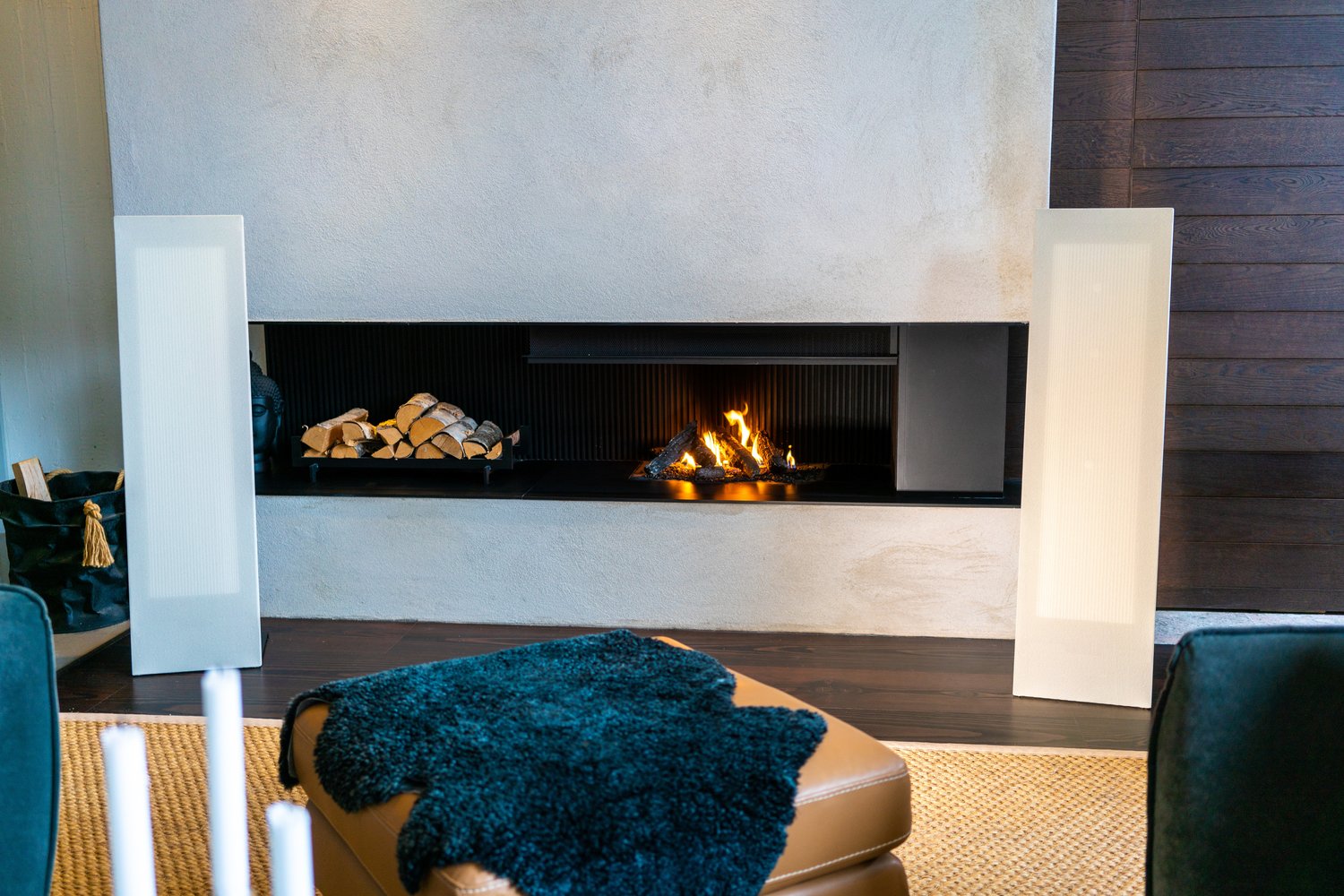
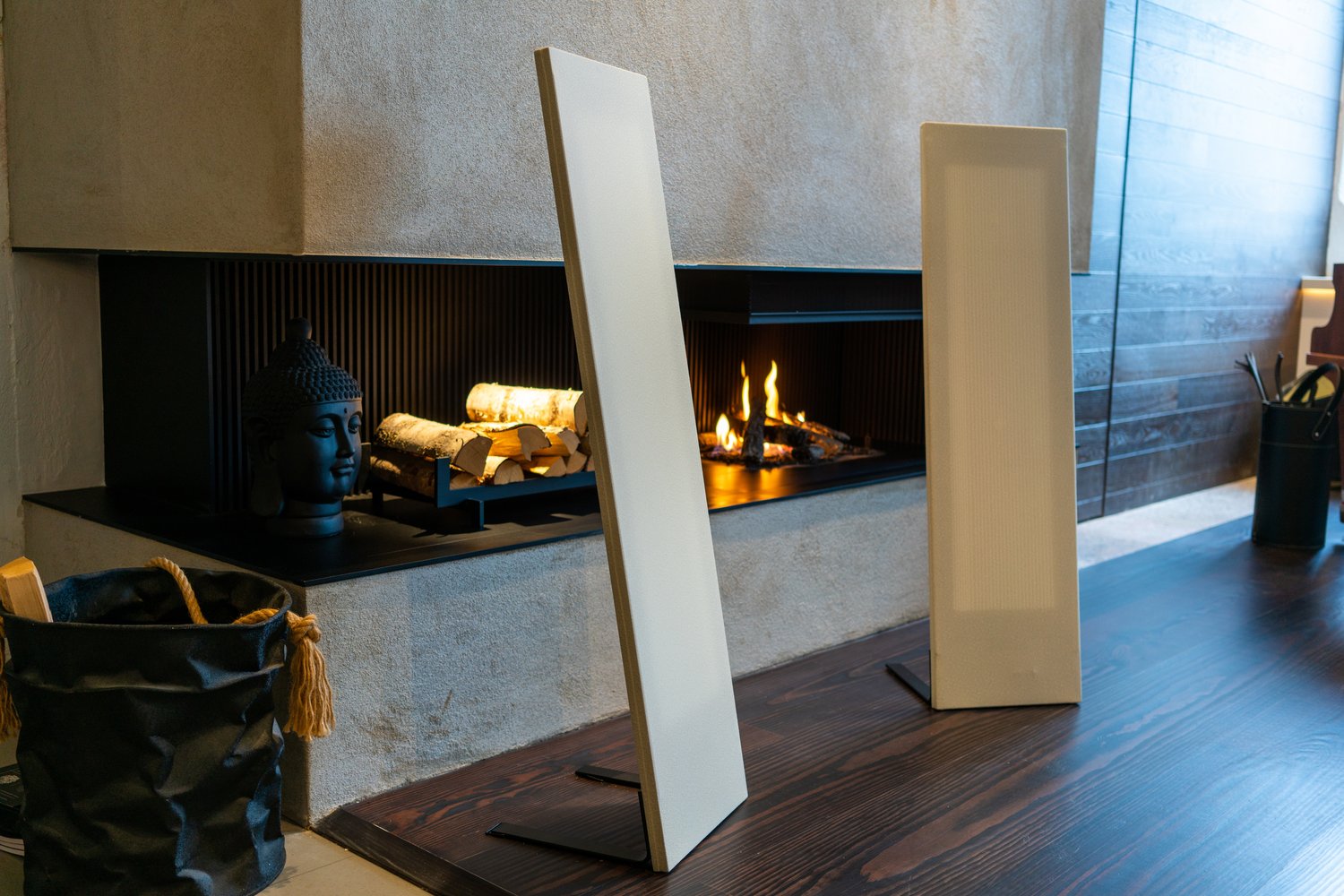
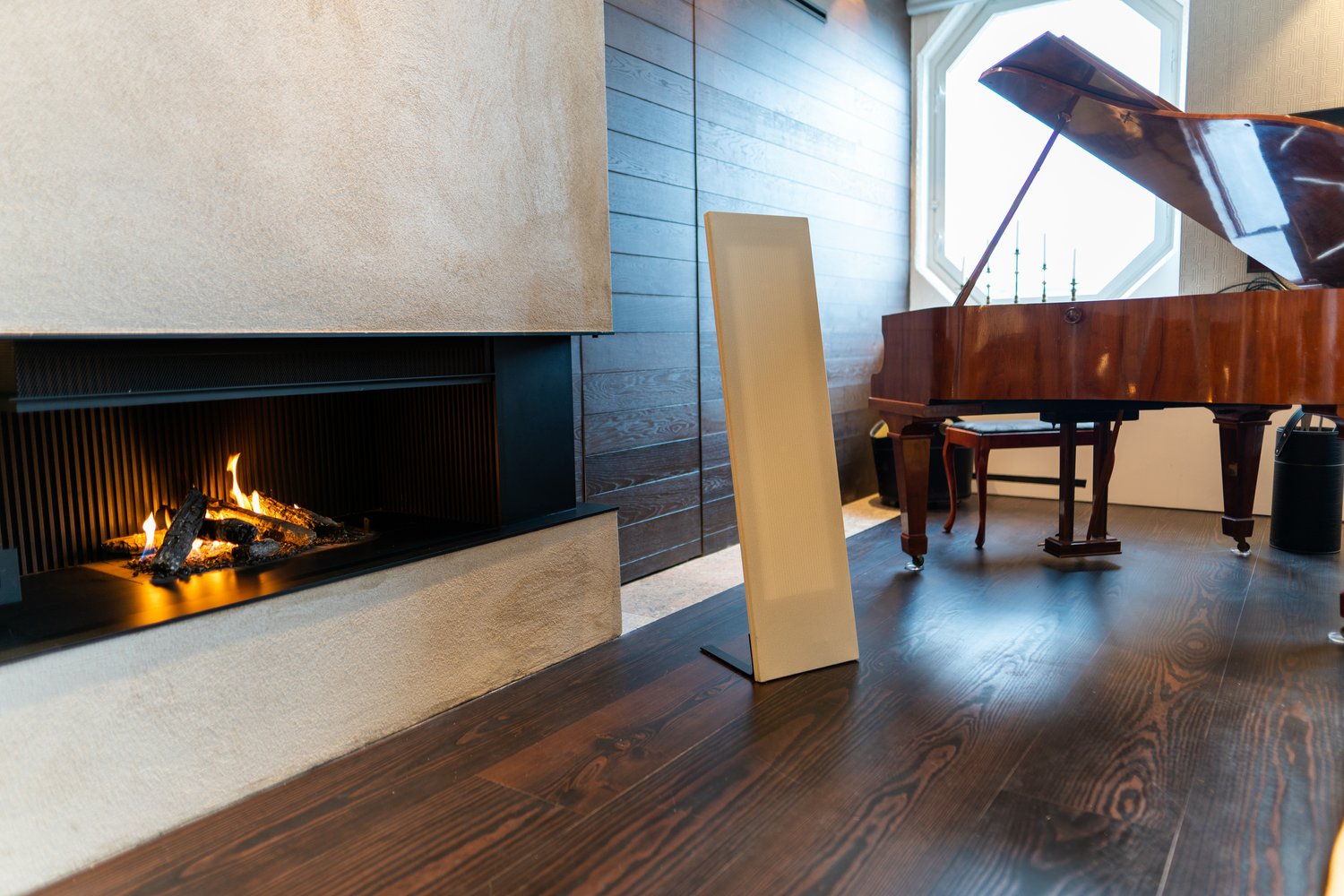
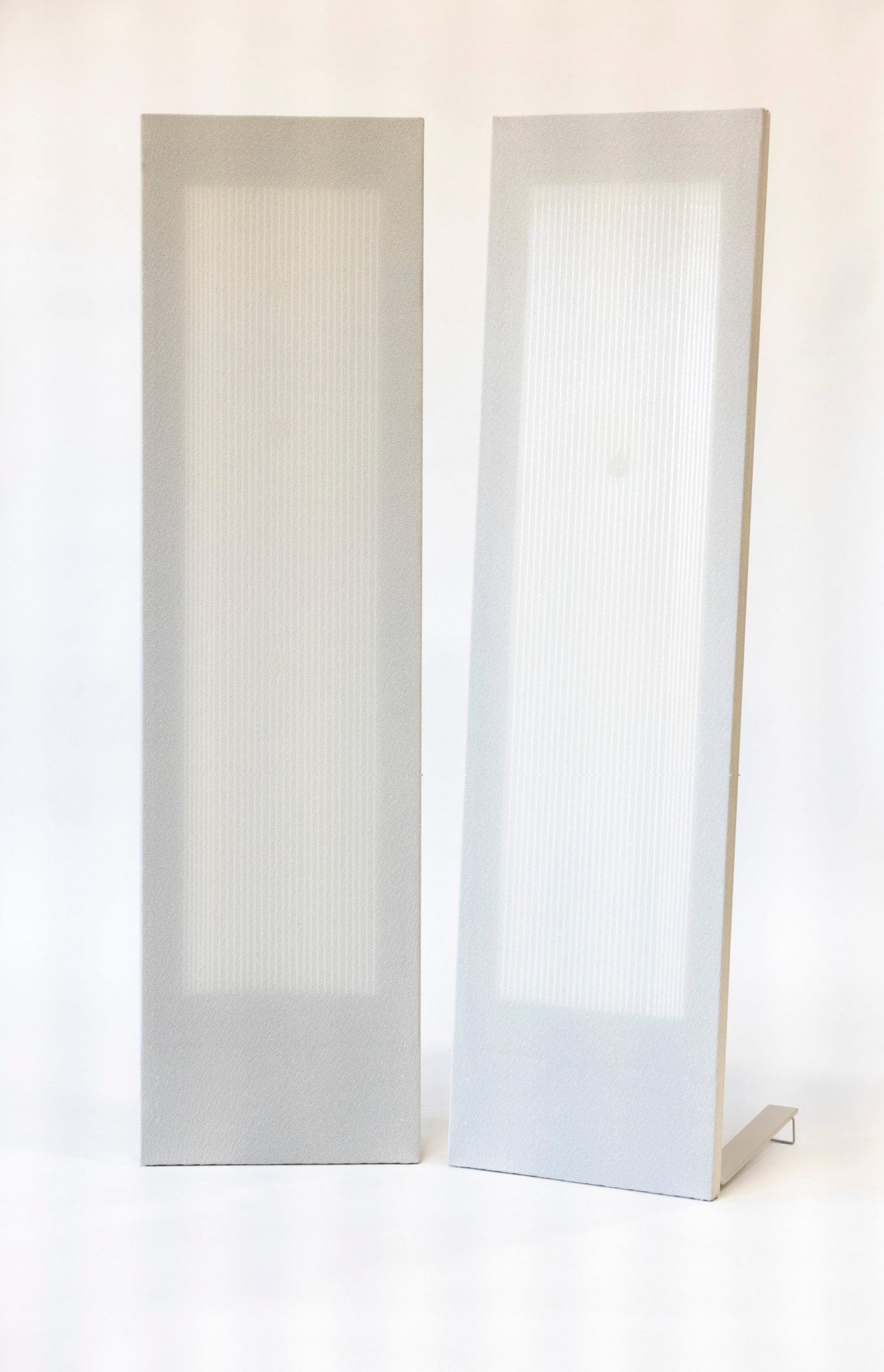
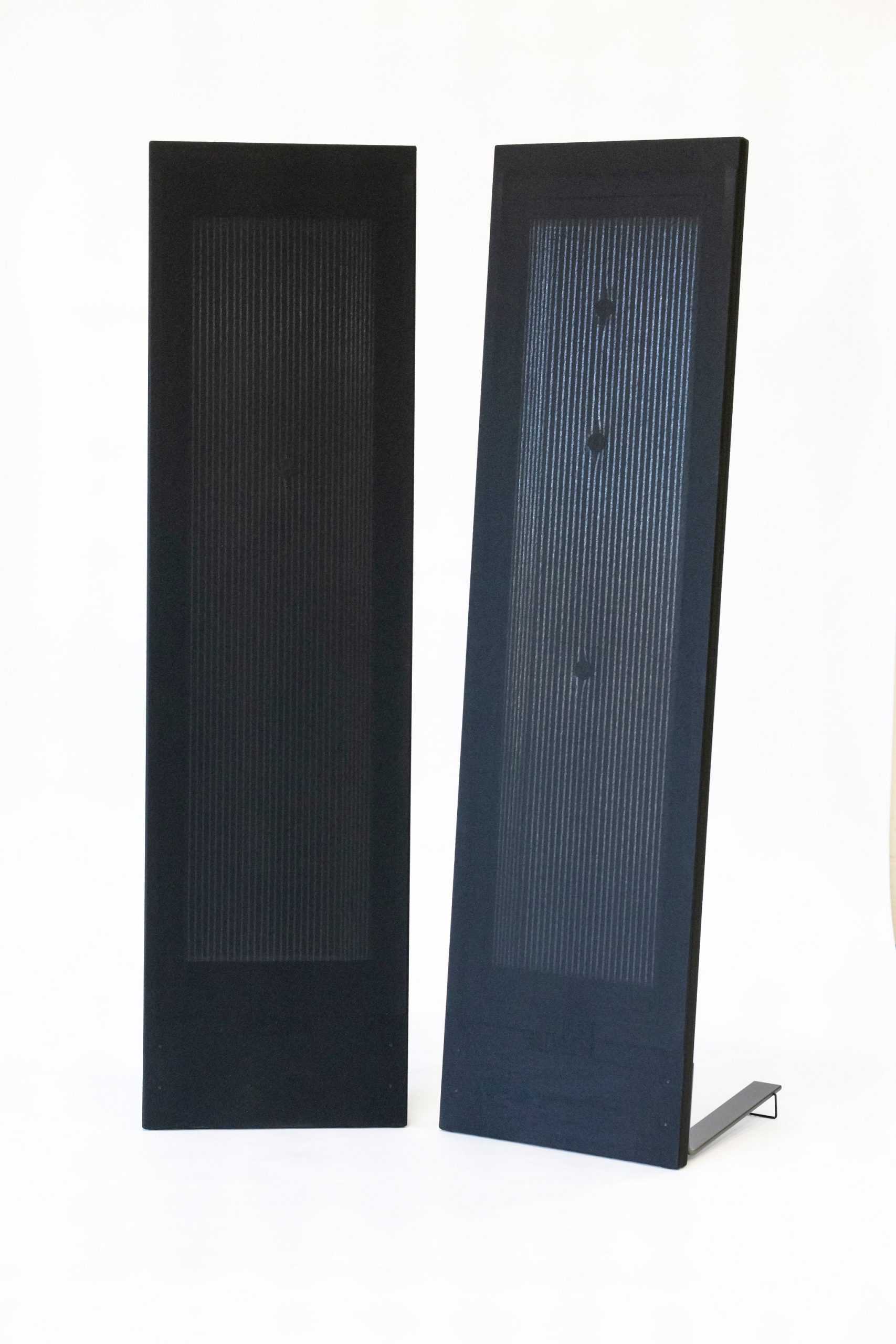
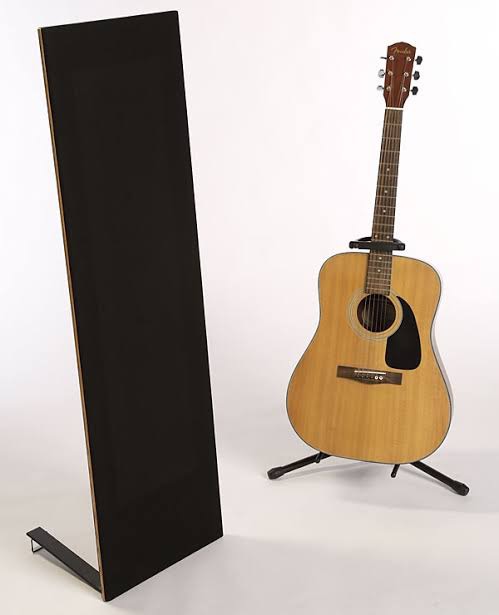
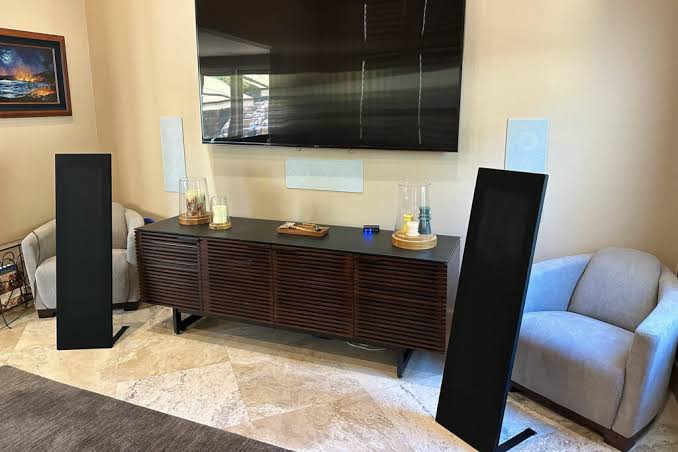
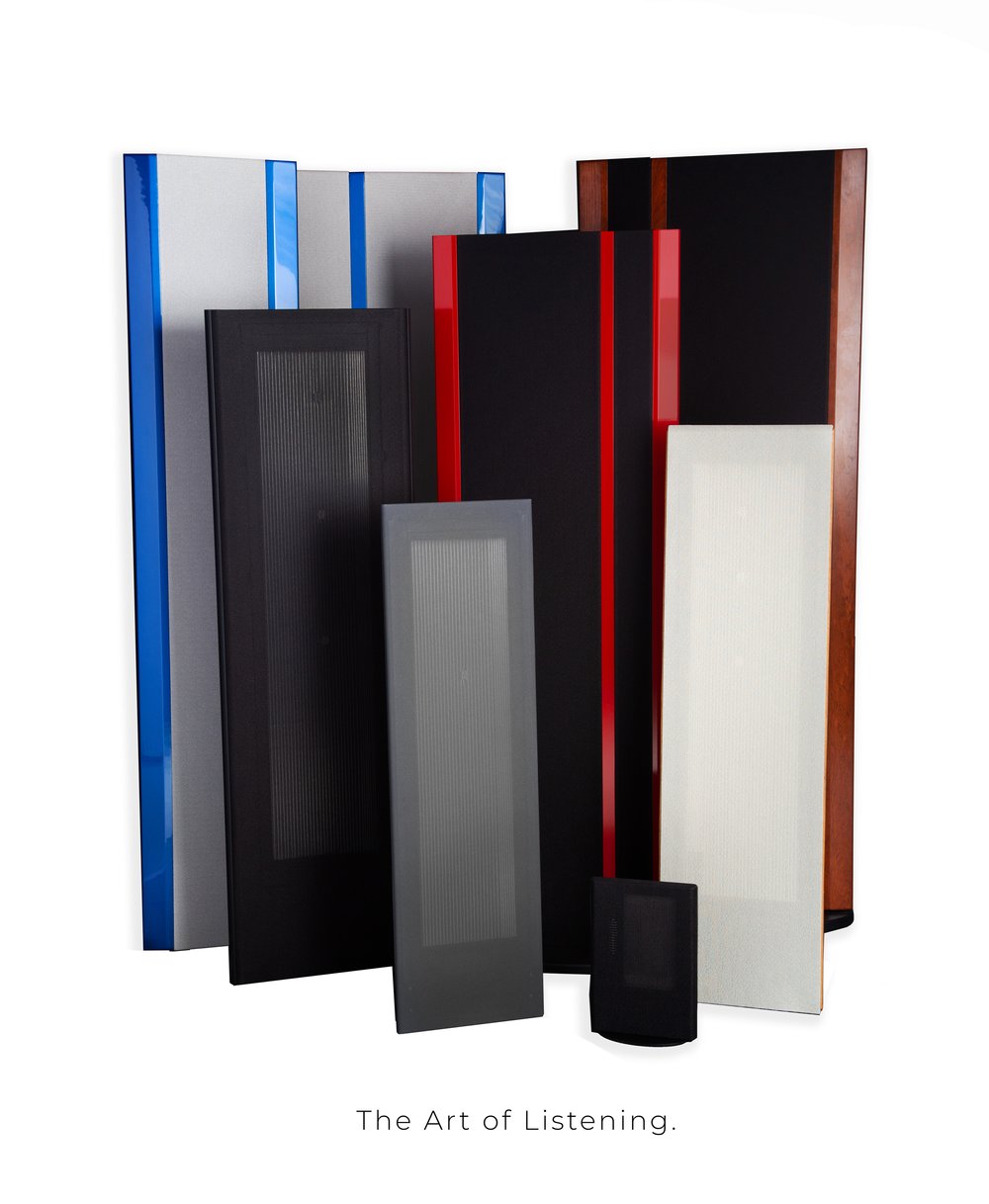
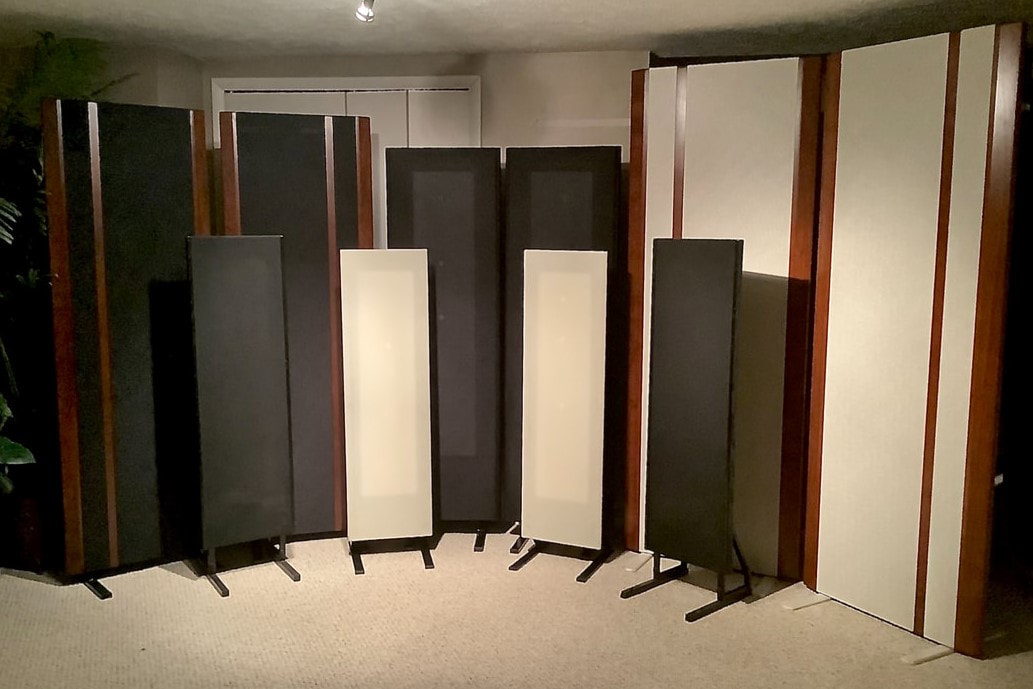
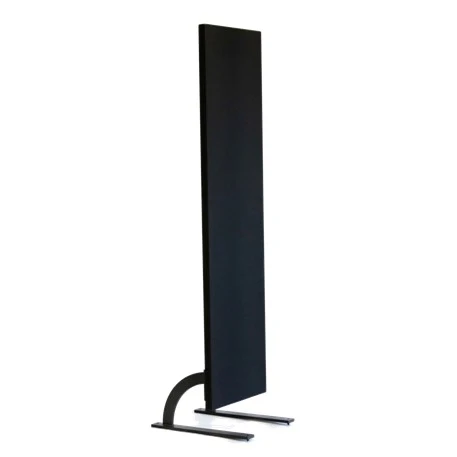
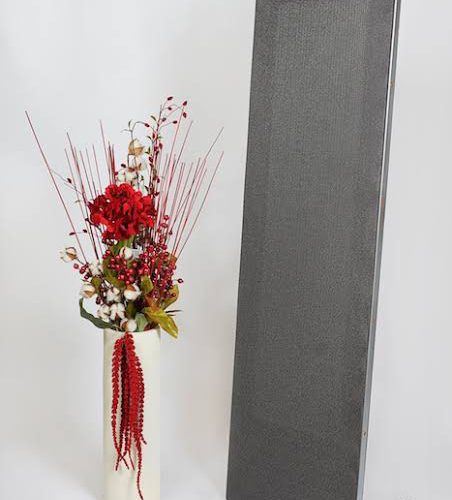
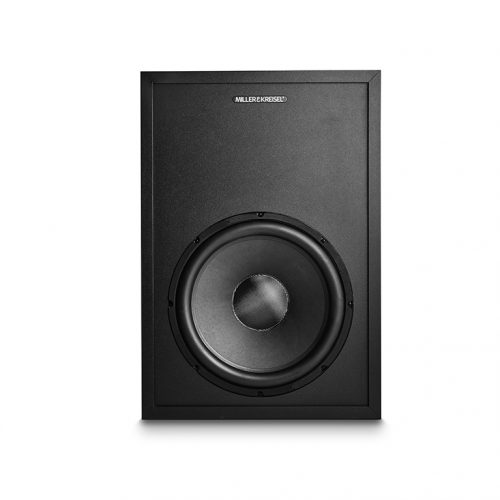

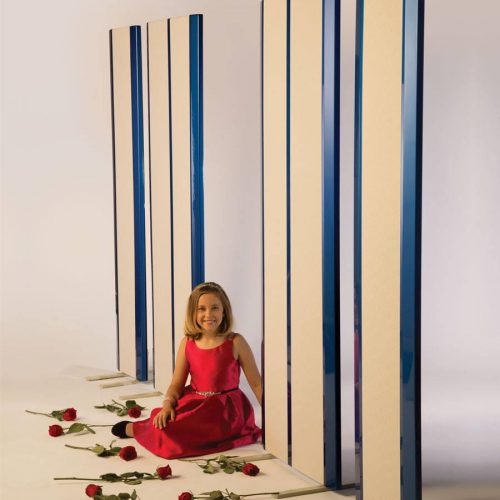
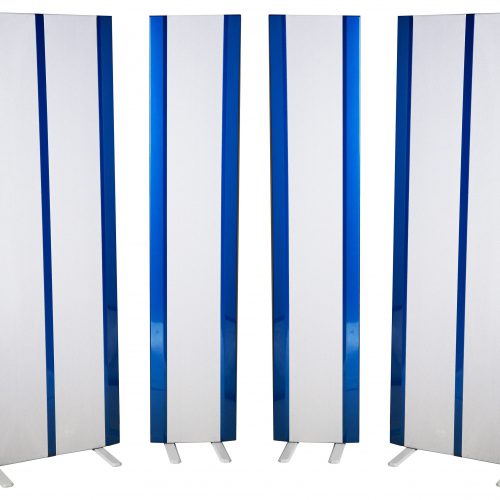
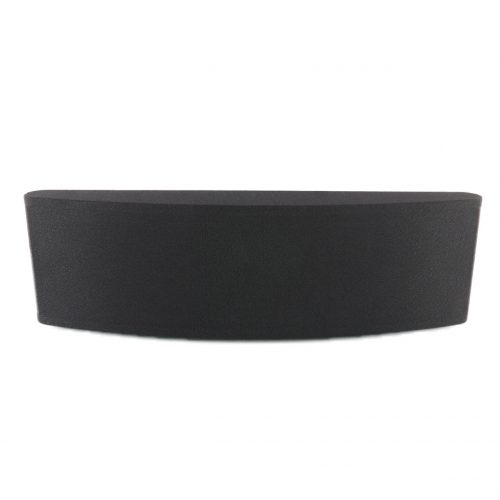
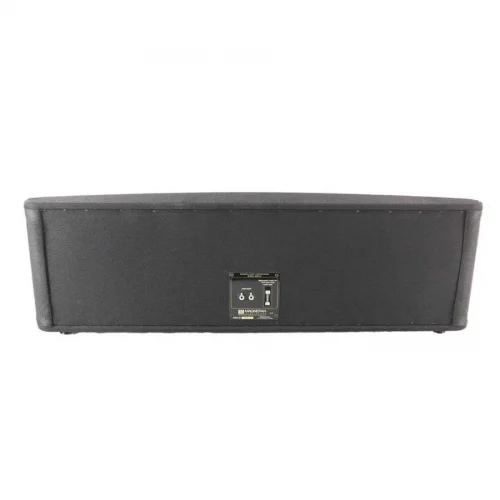


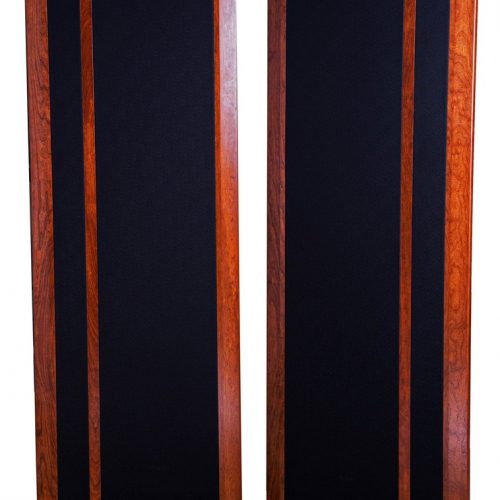
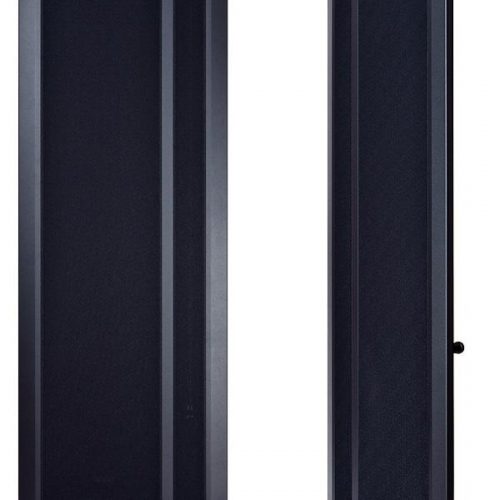
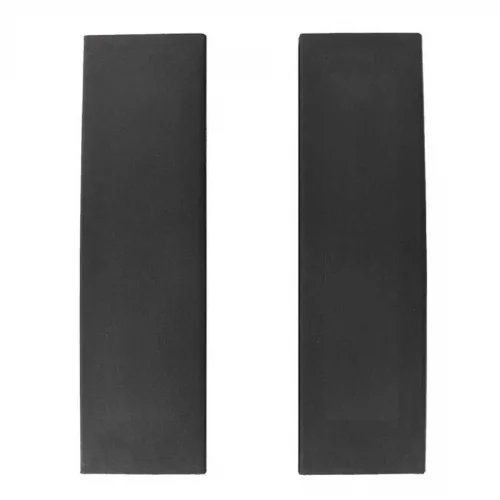
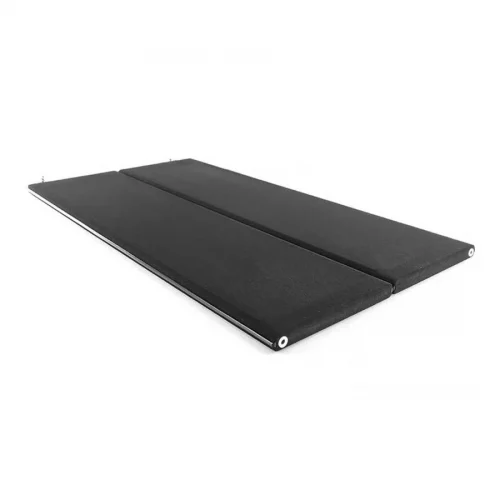
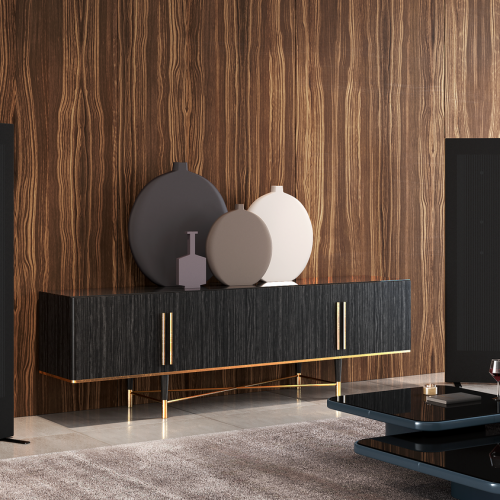
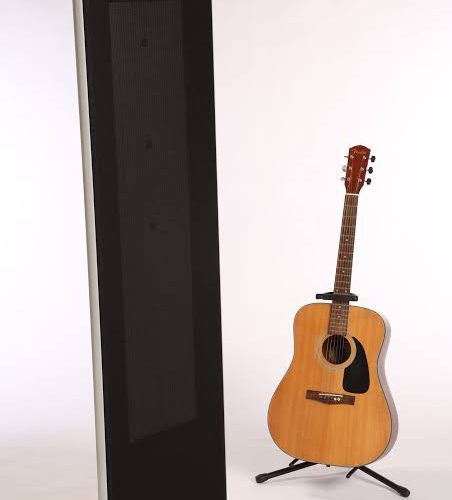
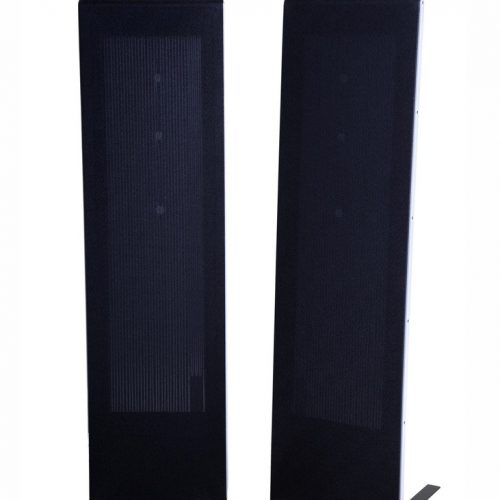
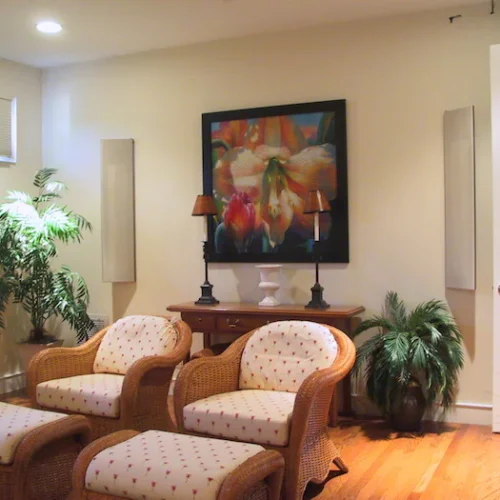
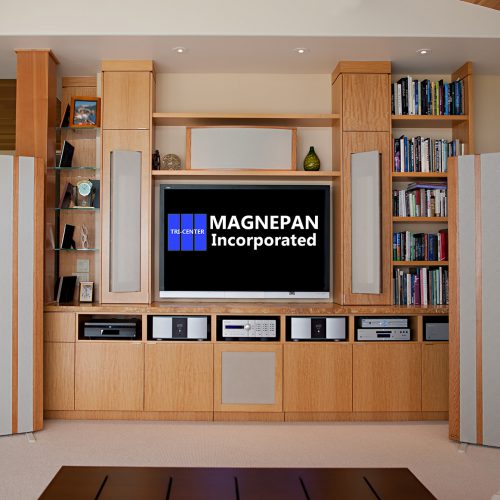


รีวิว
ยังไม่มีบทวิจารณ์